My trip to Helgoland in September 2020 was one of my favourite solo trips I’ve ever taken. After a summer of feeling lonely and homesick during my roadtrip through Germany and Austria, I was half-dreading going to Helgoland alone, but it was as though I found a new appreciation for solo travel during this trip. I didn’t get homesick, didn’t feel lonely once and just really enjoyed exploring at a slow pace in my own company.
Helgoland is Germany’s only off-shore archipelago and perhaps the most special place in the entire country. The archipelago consists of two car-free islands that sit in an isolated position in the North Sea, 46 kilometres off the German coast. And it’s a bit of a geological oddity. The main island is made up of red sedimentary rock which is unique to the North Sea. The other island, the uninhabited Düne, is all beaches and dunes that sit on white chalk of the same kind as the white chalk cliffs of Rügen, Møn and Dover, which is much younger than the red cliffs of the main island. These red cliffs are home to colonies of breeding birds, and the beaches of Düne are regularly visited by grey seals. The majority of the 1500 (human) residents are of North Frisian descent and speak Halunder, a local dialect of the North Frisian language.
But Helgoland is more than just pretty cliffs, wildlife and an interesting lingo; it also has a pretty dark history. Despite being historically Danish, Helgoland became part of the UK in 1807 and was traded to Germany in 1890 after which it became an important naval base. Shortly after the Second World War, over 7,000 bombs were dropped on the islands by Allied aircraft, followed by seven years of bombings after the residents had been evacuated. In 1947, 6,700 tonnes of explosives were detonated in an attempt to wipe the islands off the map, but instead it “just” changed the shape of the main island. In 1952, the residents were finally able to return to their island, and Helgoland has been a peaceful haven ever since.
Despite its tiny size of just 170 ha, Helgoland packs many interesting sights and experiences. The archipelago is well visited by day trippers that come to do tax-free shopping, see the red cliffs and walk the coastal trail out to the sea stack of Lange Anna, but Helgoland deserves more than just a quick visit. I was lucky to be able to spend four days getting to know every corner of the small archipelago.
I arrived in Helgoland in the early afternoon after a roadtrip through the Danish/German borderland and a 2,5-hour ferry ride from Büsum. I spent that first day getting to know the island, wandering around the town, visiting St Nicolai Church from 1959 and enjoying the atmosphere at the colourful harbour. I’d splurged and booked a hotel room right in the centre of the town for a peaceful stay on the island, and it turned out to be the perfect choice. Since I was spending four days on two very small islands, it was amazing to have my own room to return to for a rest once in a while.
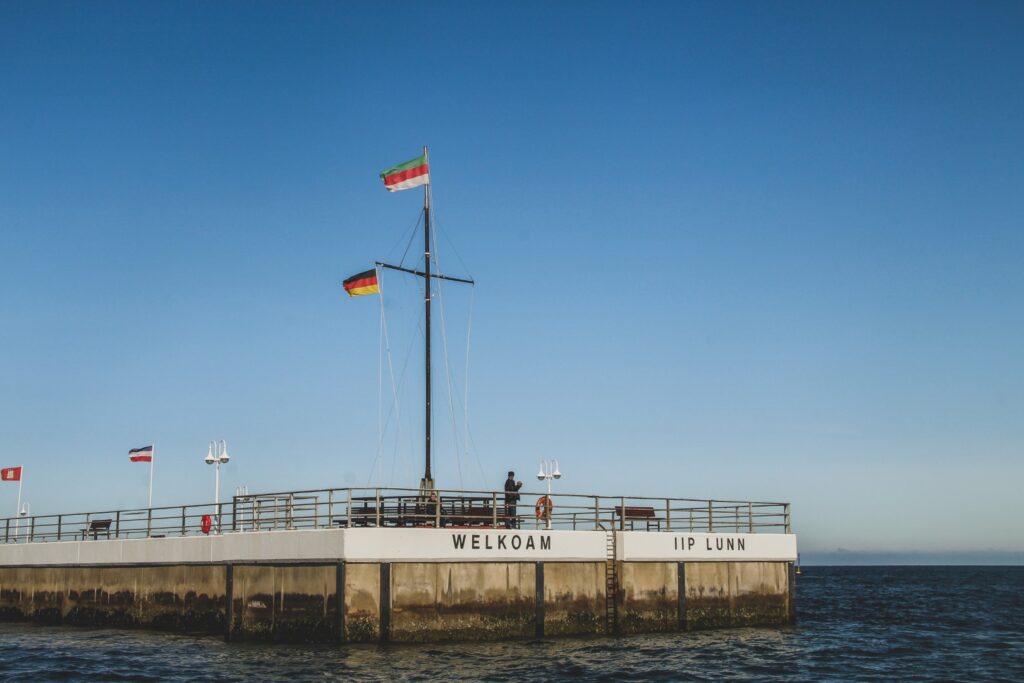
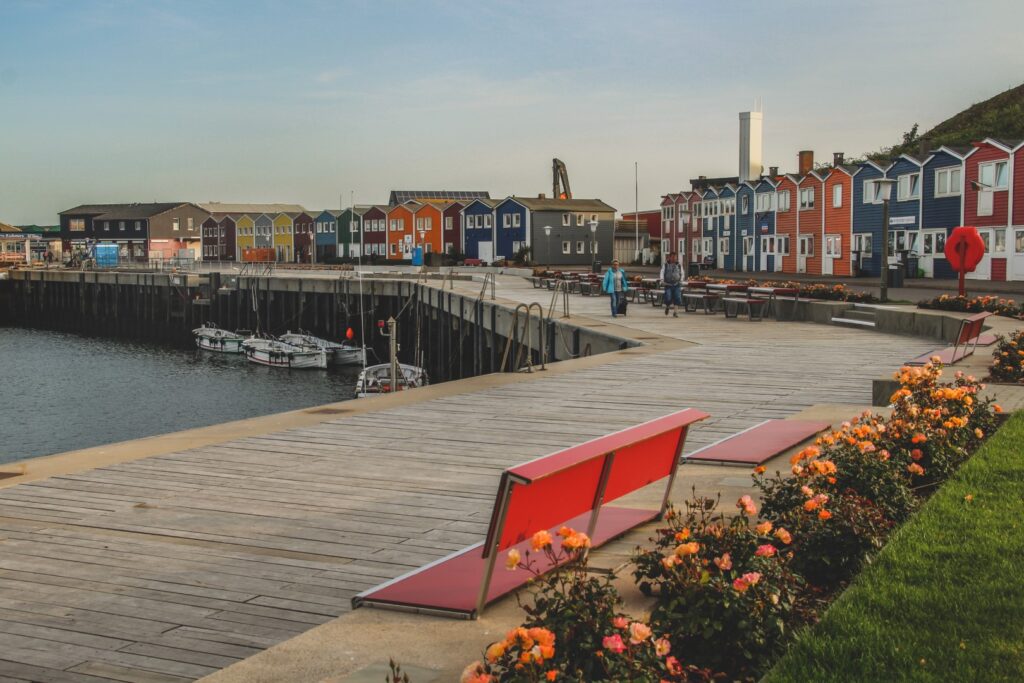

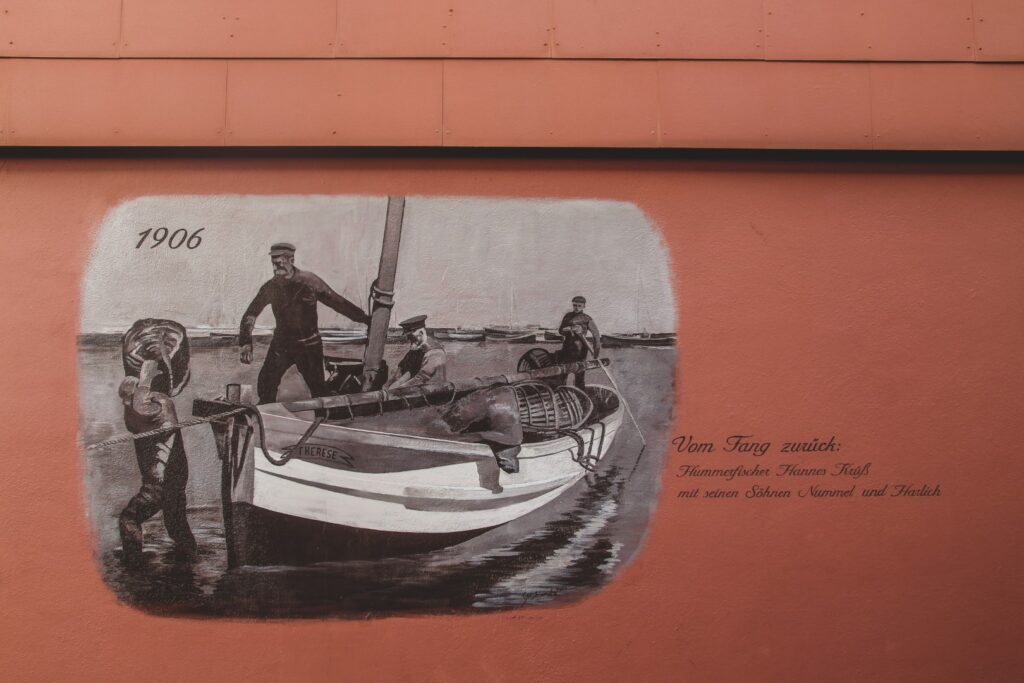

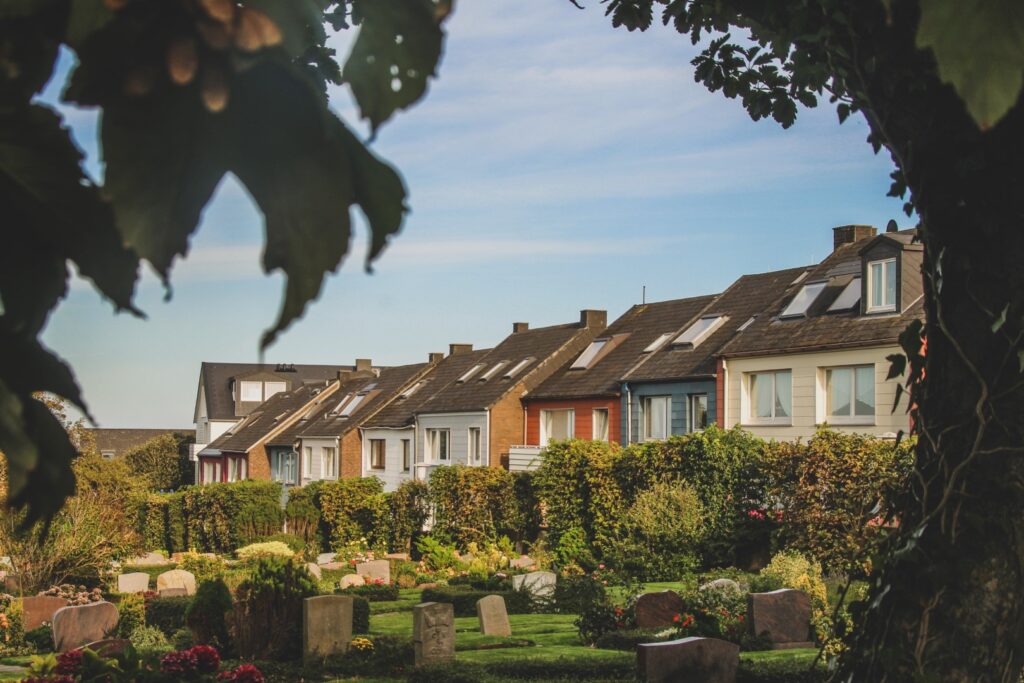
In the evening, it was finally time for my first visit to the famous red cliffs. Helgoland’s main island consists of a low-lying part (Unterland) and a raised part (Oberland) atop the red cliffs. The town is spread out on both parts on the southeastern end of the island, and an elevator connects the two parts with each other, as well as several staircases and trails. I followed one of these up Südkegel, a 26 m high rocky hill with a nice view over the town and harbour. A well-trodden trail lead me through Mittelland (a hilly area below the Oberland to the west) and up a staircase to the islands’ lighthouse from 1811 on the Oberland with several nice viewpoints along the way. It wasn’t long until I spotted the famed Lange Anna cliff in the distance.
As I stood there, looking across the island with ocean as far as the eye could see, I realized something. I LOVE isolated islands. I adore the idea of a small community in the middle of nowhere, surrounded by nothing but water. I love looking out at sea with nothing but the horizon in sight. At that very moment, I felt a deep appreciation for Helgoland emerging.
With a new-found passion for Helgoland, I continued on my walk along a path hugging the edges of the red cliffs with viewpoint after viewpoint. I watched as the sun began to set and paint the sky orange. I couldn’t help but wonder about the unusual landscape I was walking through with so many small bomb craters hidden beneath the grass, revealing the secrets this place holds of a violent past.
I walked up Pinneberg, the highest point of the island at a mere 61,3 m., from where Düne came into full view. I made my way to Lummenfelsen, a protected breeding ground for seabirds, which is one of the smallest nature reserves in Germany. It is thought to be the nature reserve with the highest density of breeding birds in the country, something I do not doubt given the many northern gannets and guillemots I met that evening.
I reached the famous viewpoint of Lange Anna just as the sun was setting. It was gorgeous but I didn’t get the bright red colours of the cliffs that I was hoping for, so I knew I’d have to return for sunrise! Plenty of other tourists and photographers joined me to watch the sun set over the red cliffs. I was actually surprised by how popular Helgoland is – even in the off-season! But most were Germans. I have a feeling most of the world has yet to discover Helgoland. They’re in for a treat once they do.
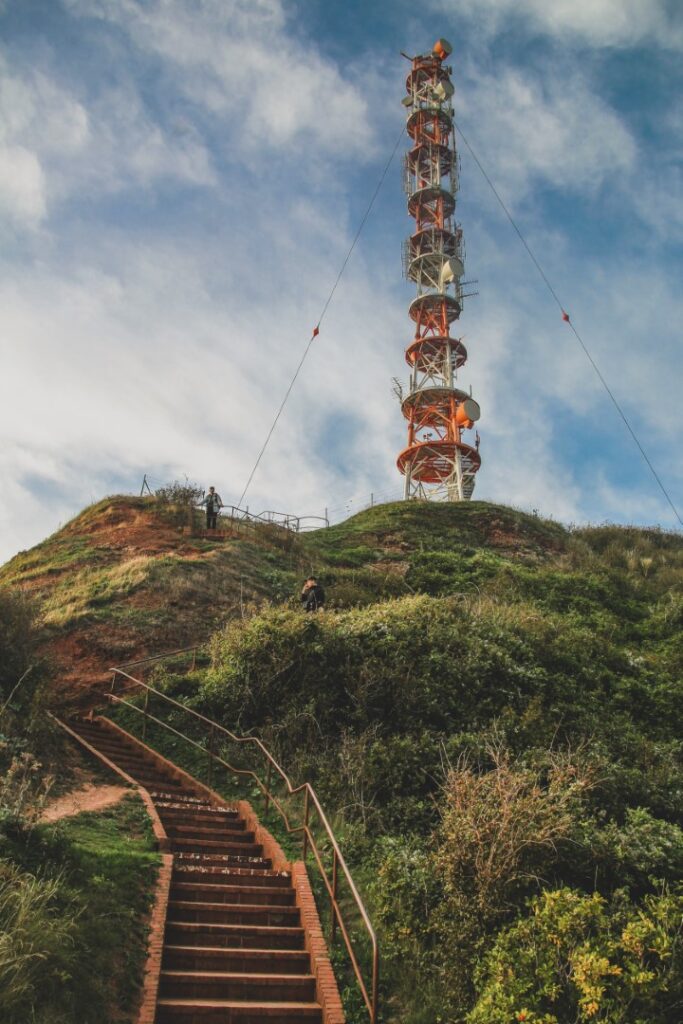


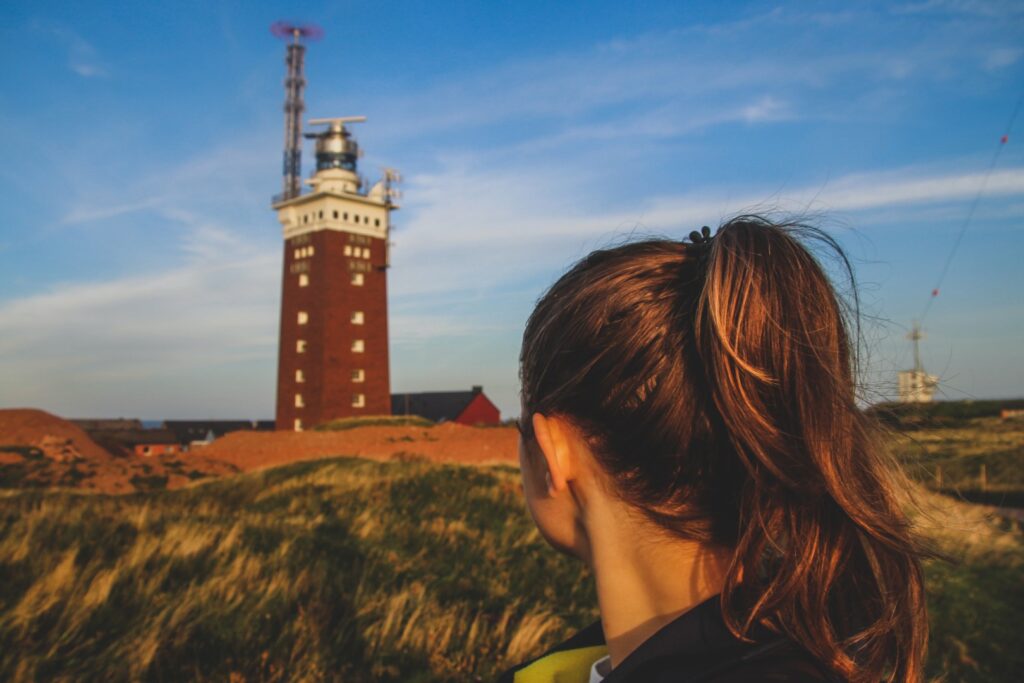
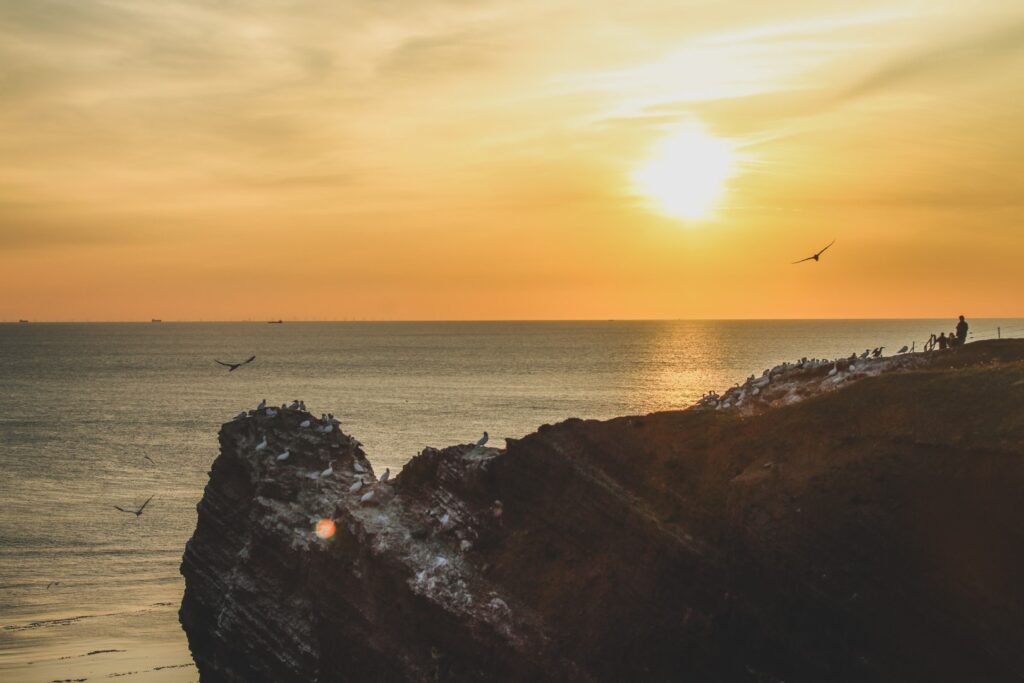
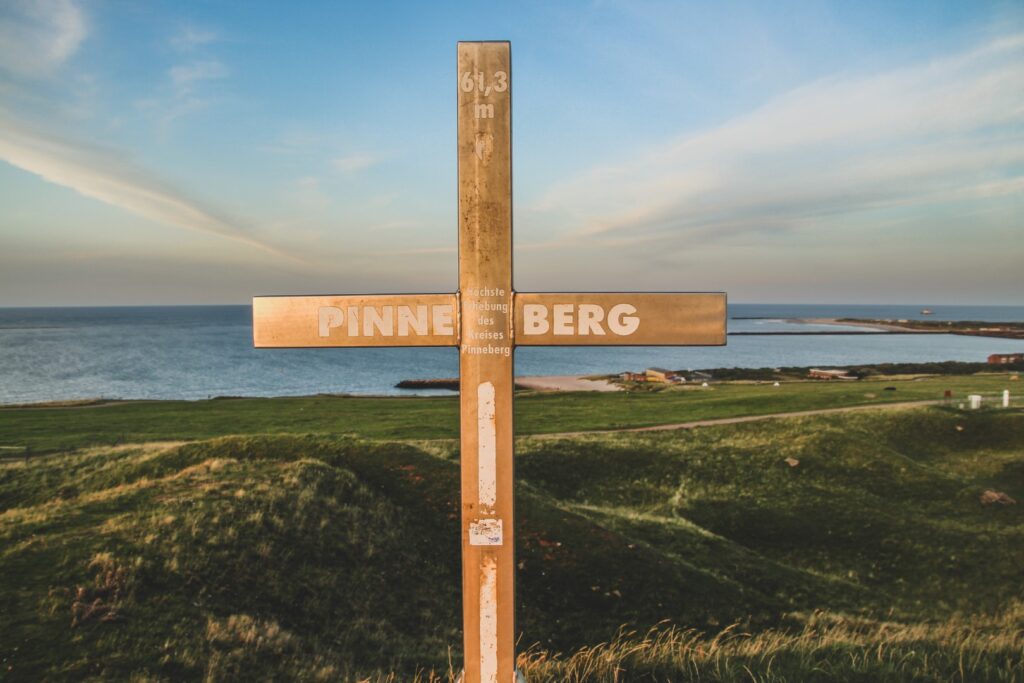
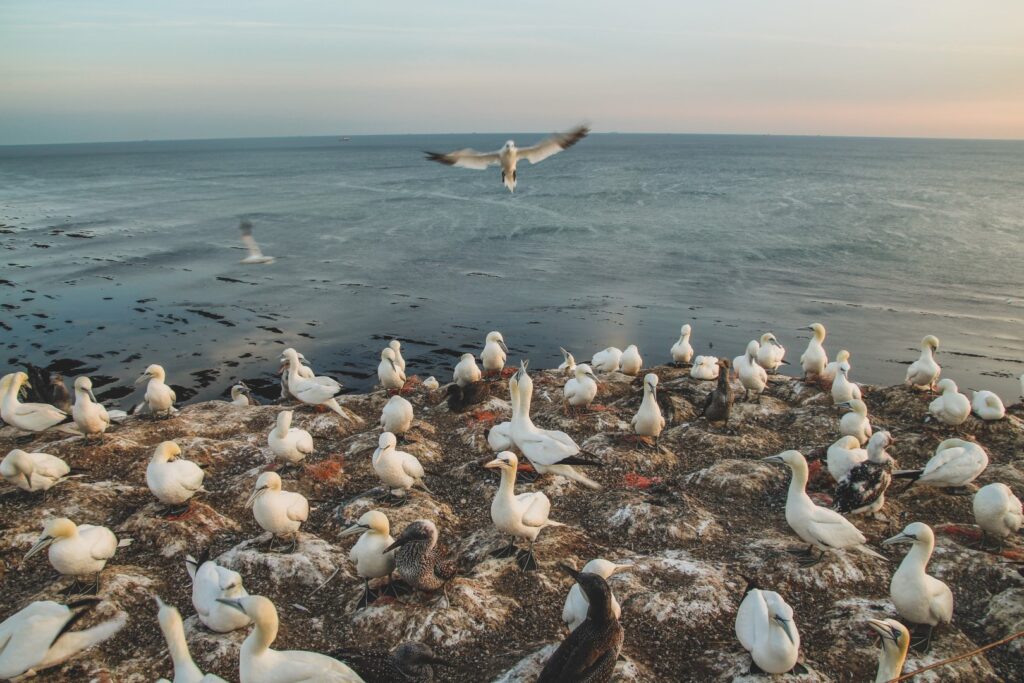

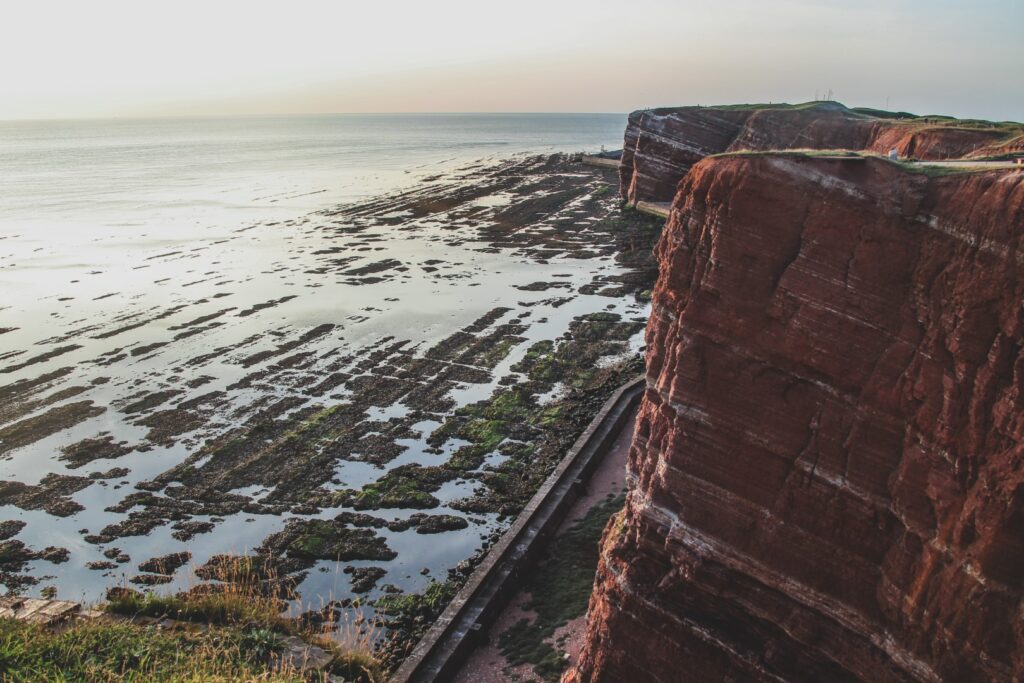
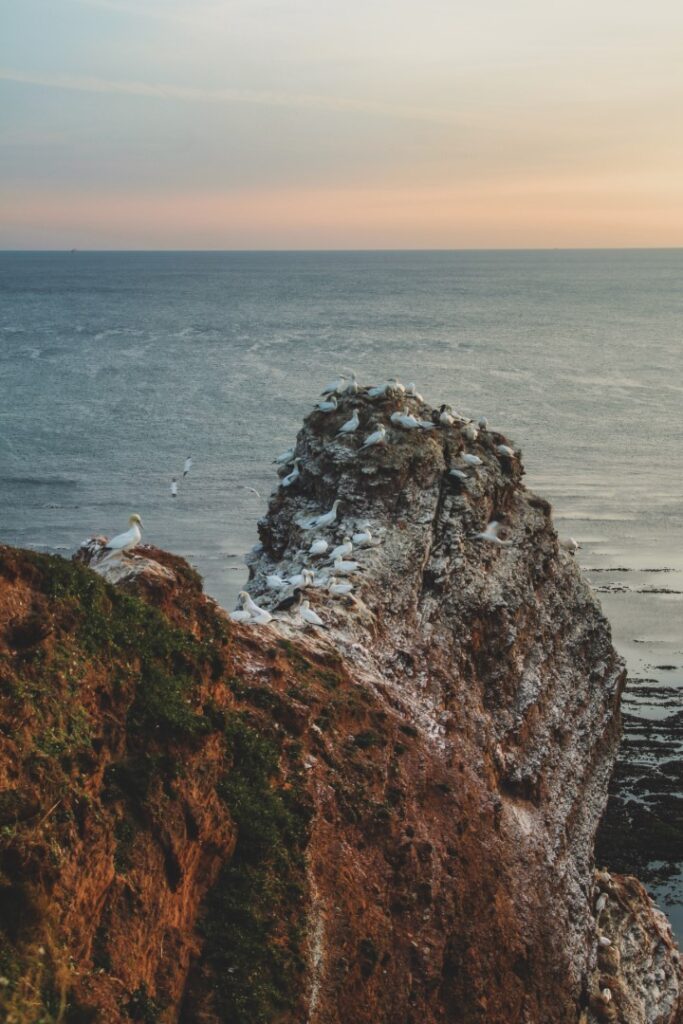

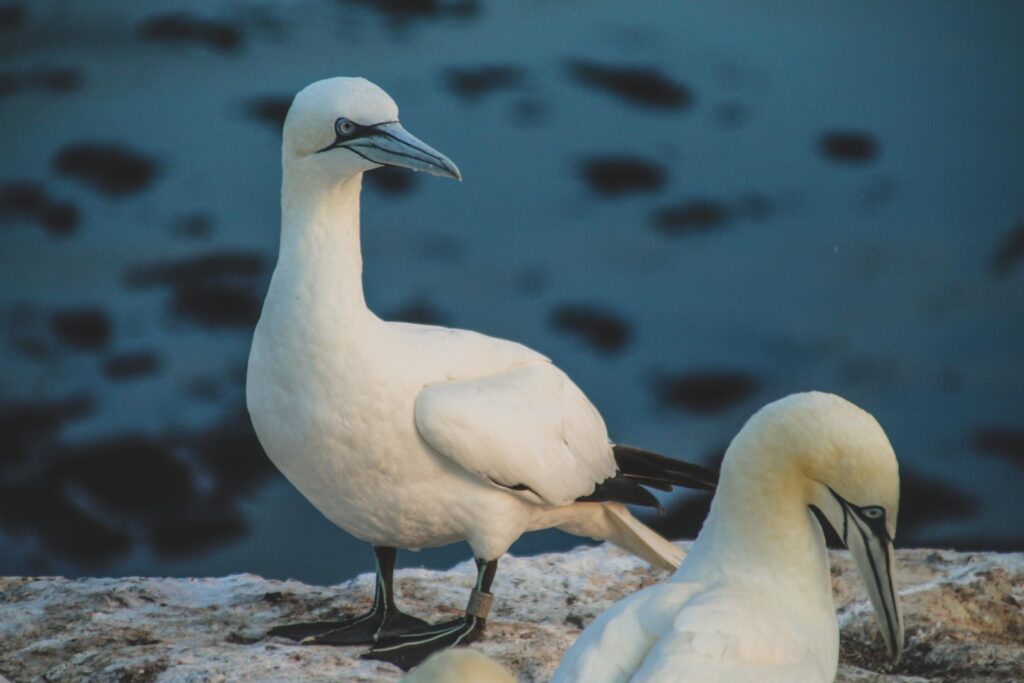
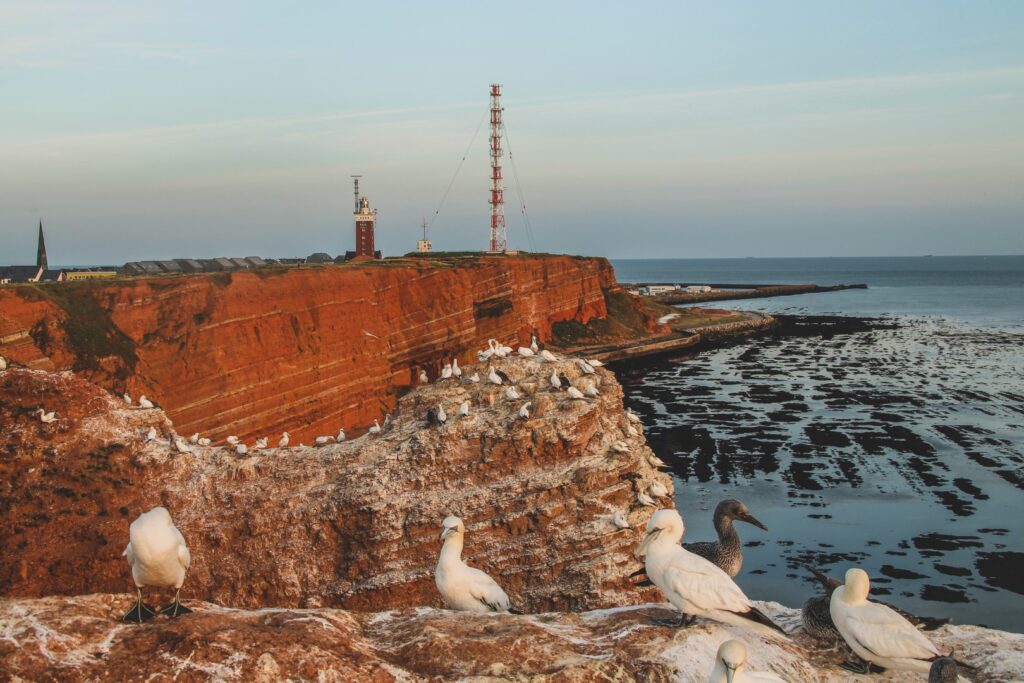
The next morning, I woke up to another beautiful day and decided to go on a morning walk in the Kurpark of Nordostland, a lowland area east of the red cliffs. The sun was warm and there was a nice cool breeze. The perfect temperature. I walked slowly through the bushy Kurpark, as here I found the solitude I’d been longing for. There was no one around, just me and my happy thoughts.
I walked down to the ocean and onto the wide Nordostbohlwerk promenade which lead me to Nordostmole, an isolated pier with a view over the sandy Nordstrand. There were many people walking on the beach, but no one on the pier except me. It was the perfect spot to enjoy my breakfast while listening to the sound of the crashing waves.
When I’d finished my breakfast, I headed slightly inland past the seemingly empty youth hostel and a sports ground that is nestled below the red cliffs in a most beautiful location. Imagine playing football there!
I followed a path back to the beach and got closer and closer to the cliffs. It’s forbidden to get too close due to the risk of falling rocks, but a steep staircase leads up to the top of the cliffs, offering wonderful views of the lowlands beneath them. I saw several sheep balancing on the cliff edges, trying to reach greenery to eat. I’m truly amazed by their balance!
I strolled along the coast back to the birds and Lange Anna. There were a lot more tourists this time around as this part of Helgoland is particularly popular among day trippers, so it wasn’t long until I left the area behind and walked along the cliff edge back into town. I ended my walk with a stroll through Kleingardenverein, an idyllic area full of tiny allotment cabins.
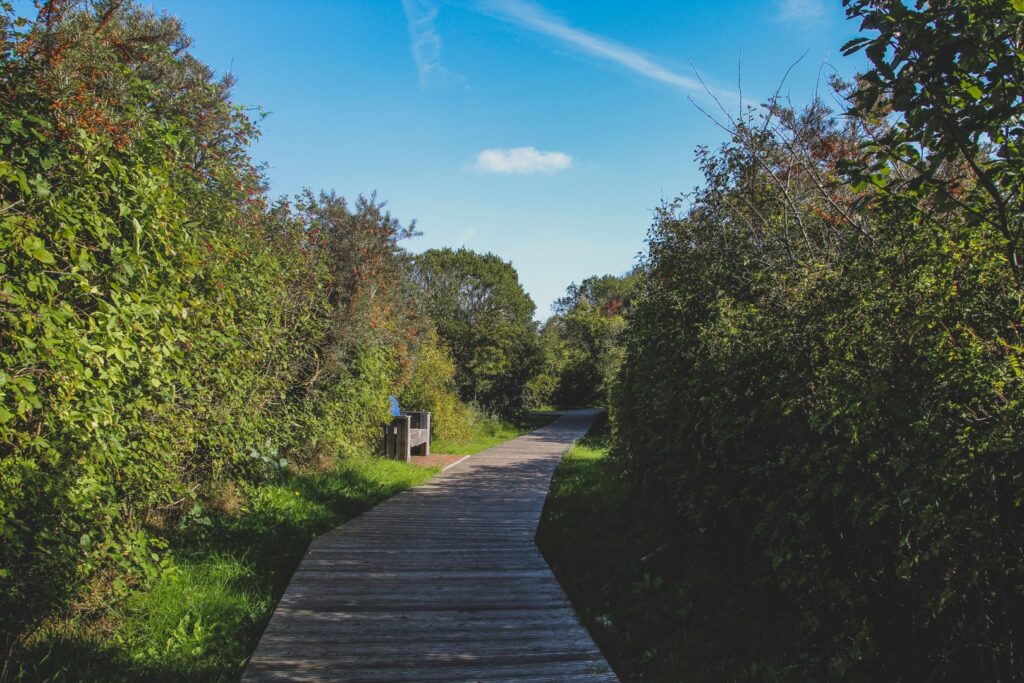
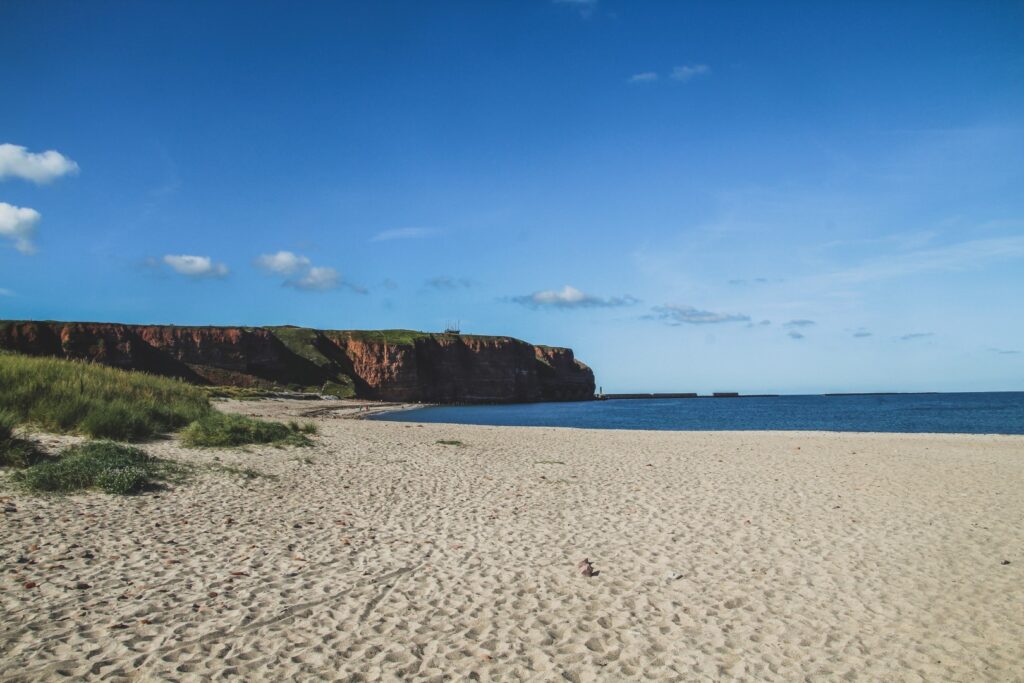
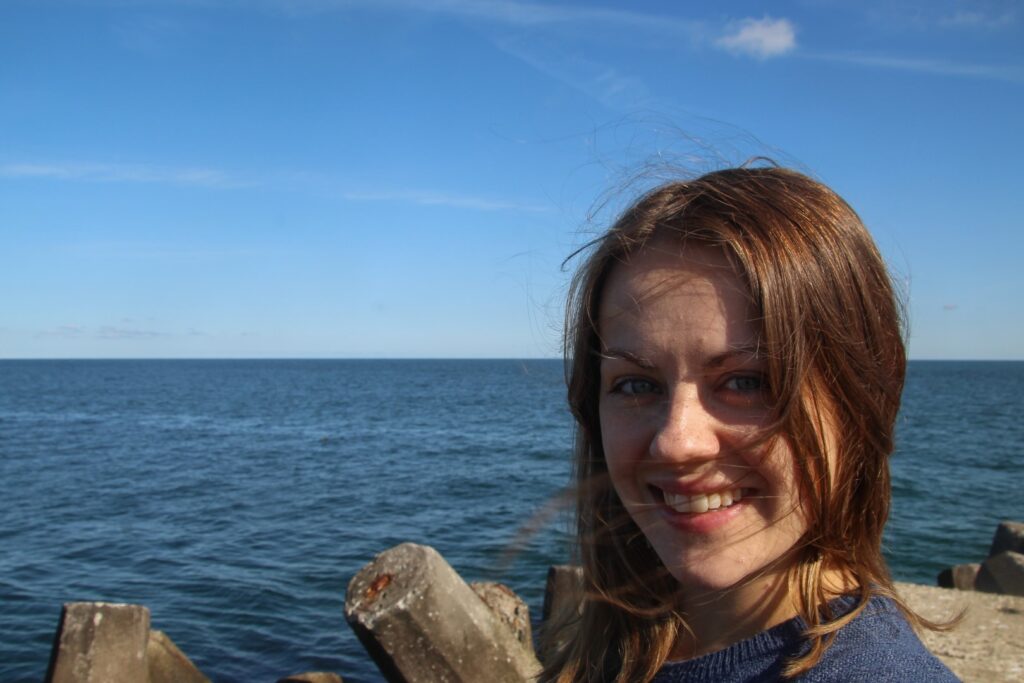
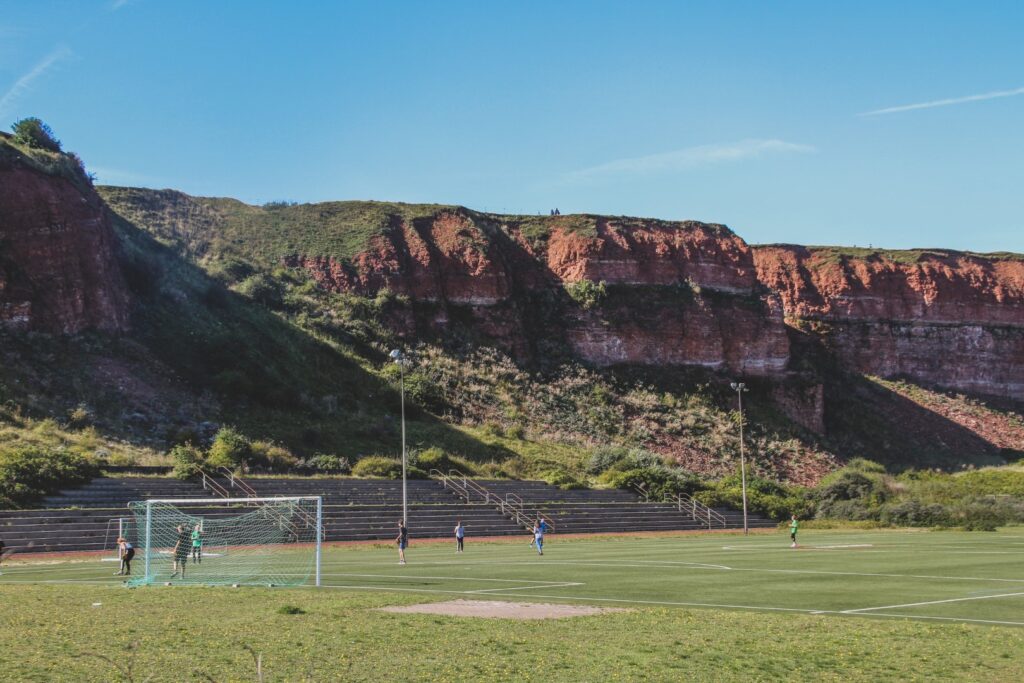
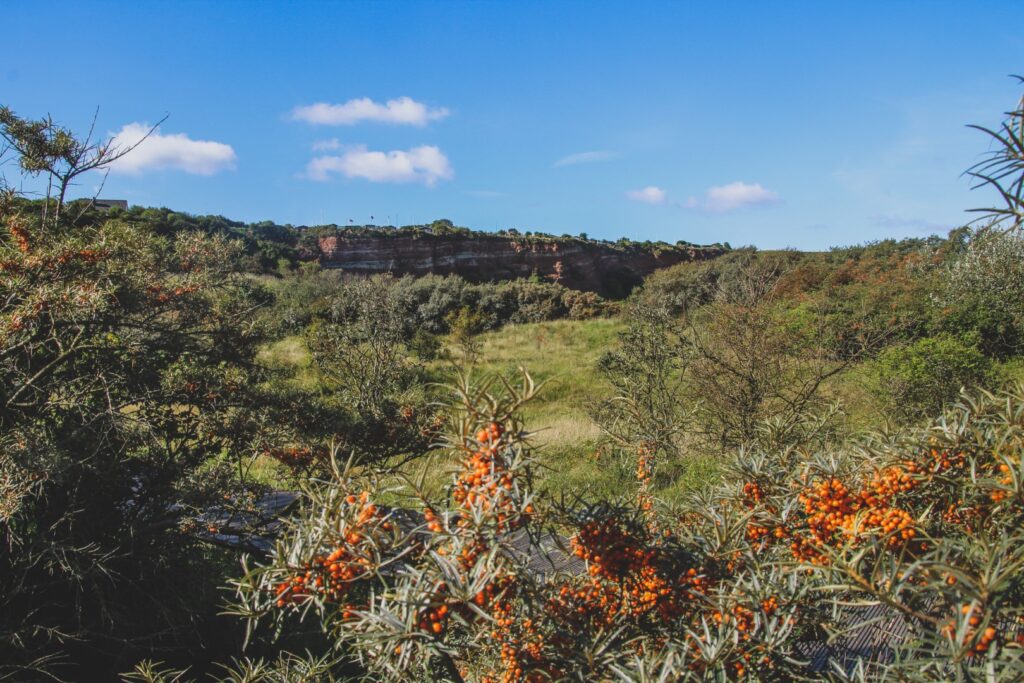
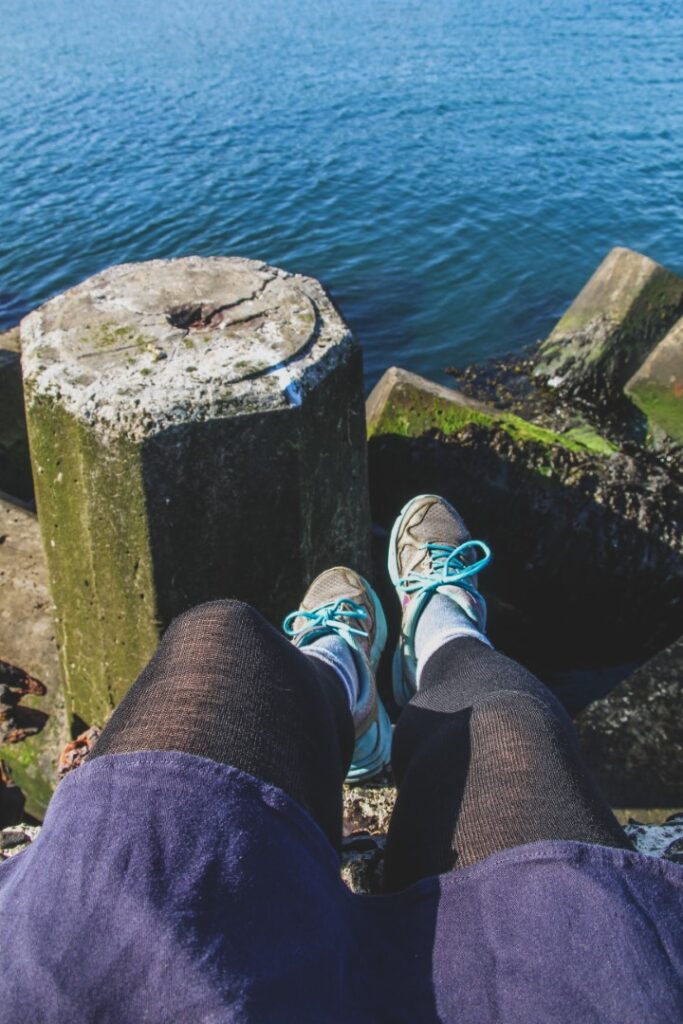




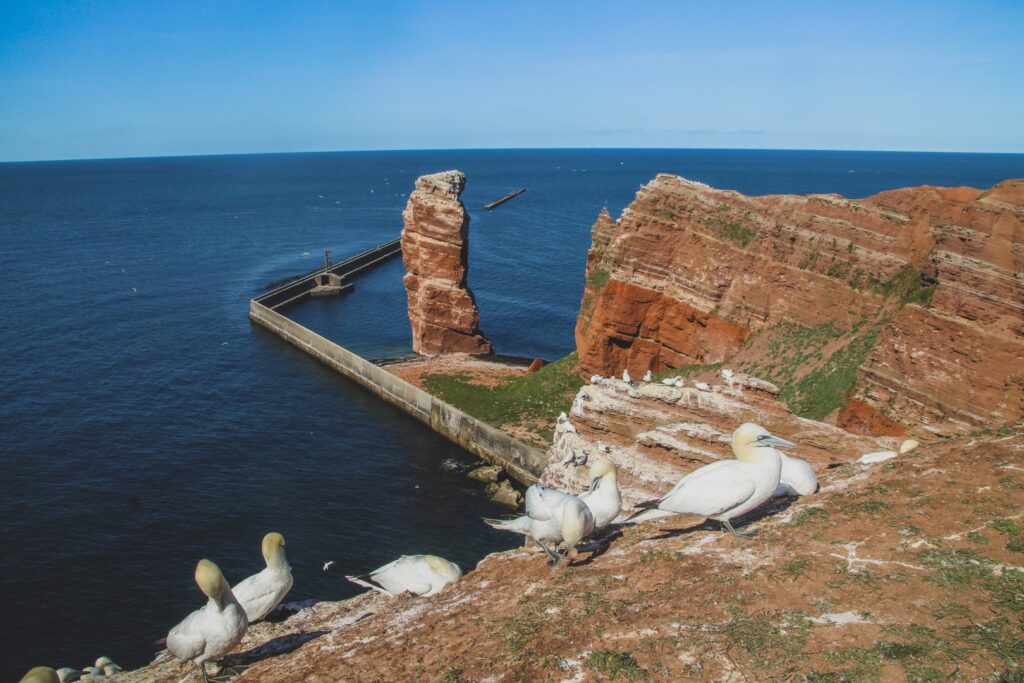
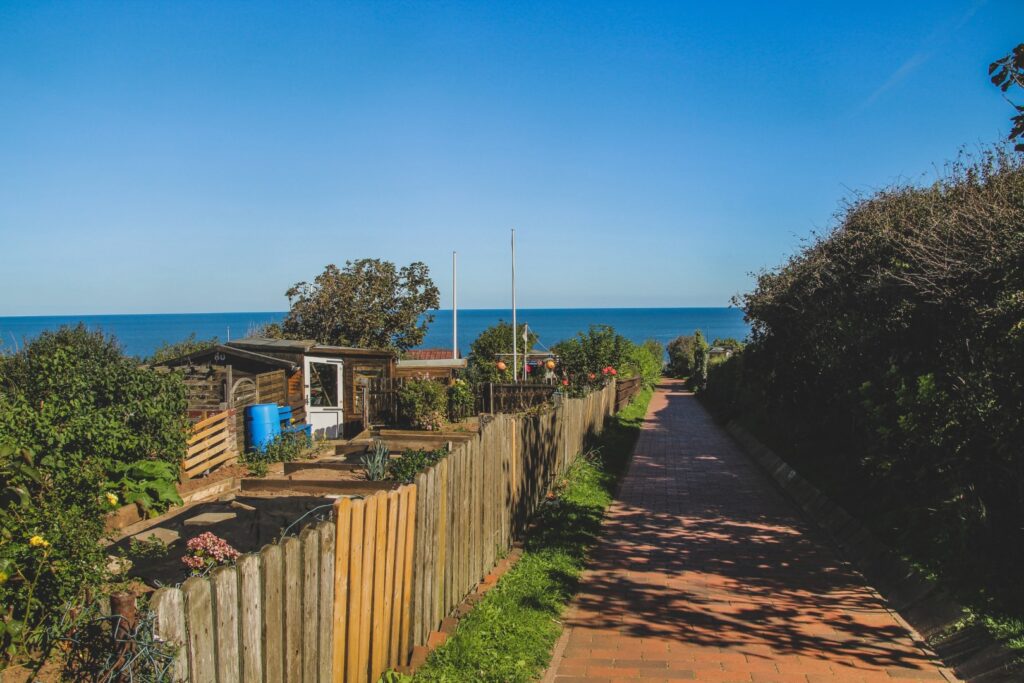
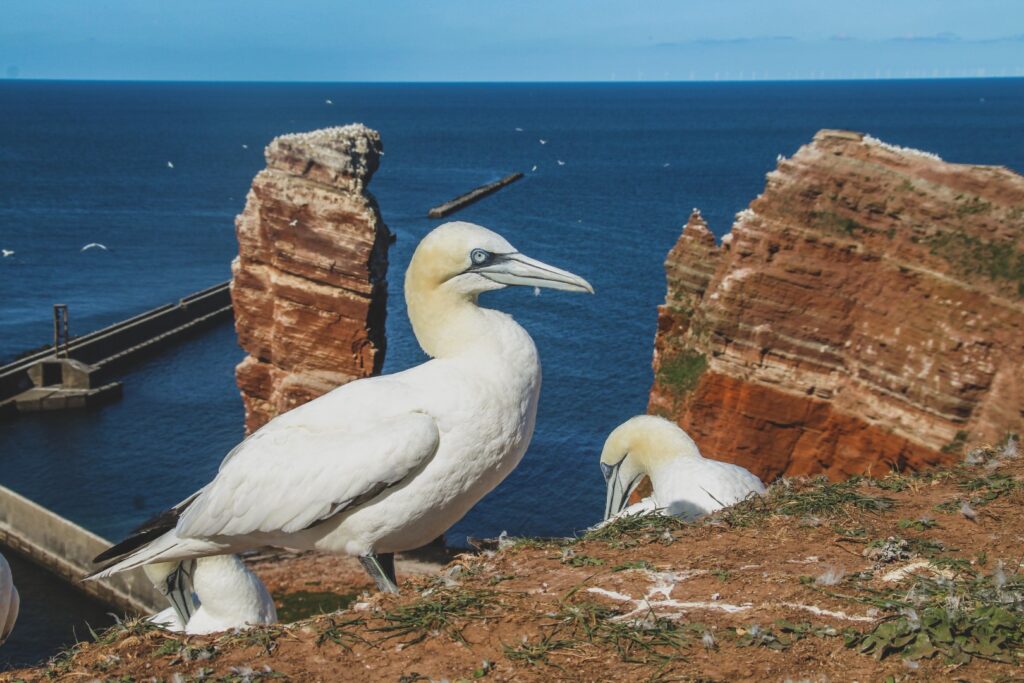
Back at the hotel, I relaxed for a little while, but it wasn’t long until I was out of the door again. The weather was just too beautiful to stay indoors.
I walked down to the harbour and bought myself a ticket to the neighbouring island of Düne, famous for its long sandy beaches and colony of grey seals, and also home to Helgoland’s tiny airport. It took just a few minutes to cross over to this island which feels completely different than the main island, less than two kilometres away but a world of difference. While the main island is rocky and wild, Düne’s nature is more tamed, full of meadows, small lakes and of course the much-loved white sand beaches.
It was too cold for a beach day when I visited, so there weren’t many people joining me to the island. My plan was to spend the entire afternoon there and find a good spot to watch the sunset. I spent my time walking around the island, following the coast from beach to beach. It took only a few minutes before I spotted the first seal, chilling on the beach next to the tiny marina. At the beautifully sandy beach of Südstrand where the Helgoland Düne Lighthouse is located, I discovered a whole herd of them lazing in the sun. I opened up a can of Fanta and sat down on the beach to watch them. Suddenly, a small private jet flew over my head, only to land moments later on the tiny airstrip behind me.
I continued my walk along the beach, collecting piles af sand in my shoes as I went along. I turned a corner and entered the more stony beach of Nordstrand where there wasn’t a seal in sight until I got to the very end of the beach and spotted a whole bunch of them! They are so funny to watch, I could spend a whole day just studying their slow moves!
I turned the next corner and got back to where I started at the marina. I had walked around the entire island! Now it was time to find a spot for lunch before exploring the interior. I walked back to the seals on Nordstrand via the only campsite in the archipelago and found a bench with the most perfect view of the seals. I spent a good hour eating my lunch and staring out at the seals and the ocean beyond them, and just enjoying being there with nothing to rush for.
Düne is uninhabited, but that doesn’t mean it doesn’t have any buildings. In fact, it’s got an entire village of colourful holiday cottages located in the dunes behind the harbour. The “village” is also home to a tiny graveyard, the Cemetery of the Nameless. Two small lakes are hidden in the wilderness behind the village where I found ripe blackberries and listened to songbirds. Further inland towards the airport, I came upon Jonny’s Hill, a 6 meter high hill which sticks up just a little from the rest of the island so it does have a nice view!
I went to take a look at the very tiny airport before heading back down to Südstrand to find the seals. The sun was about to set and I really wanted to photograph the seals with the sun behind them but I quickly realized that I wouldn’t be able to get the desired angle there. So instead, I rushed back to Nordstrand to find the other herd of seals and got there just in time for the sunset! I snapped my photos and watched as the seals moved closer to the water and dived in right before nightfall.
After this beautiful spectacle, it was time to head back to the main island and my cozy little room for a quiet evening.
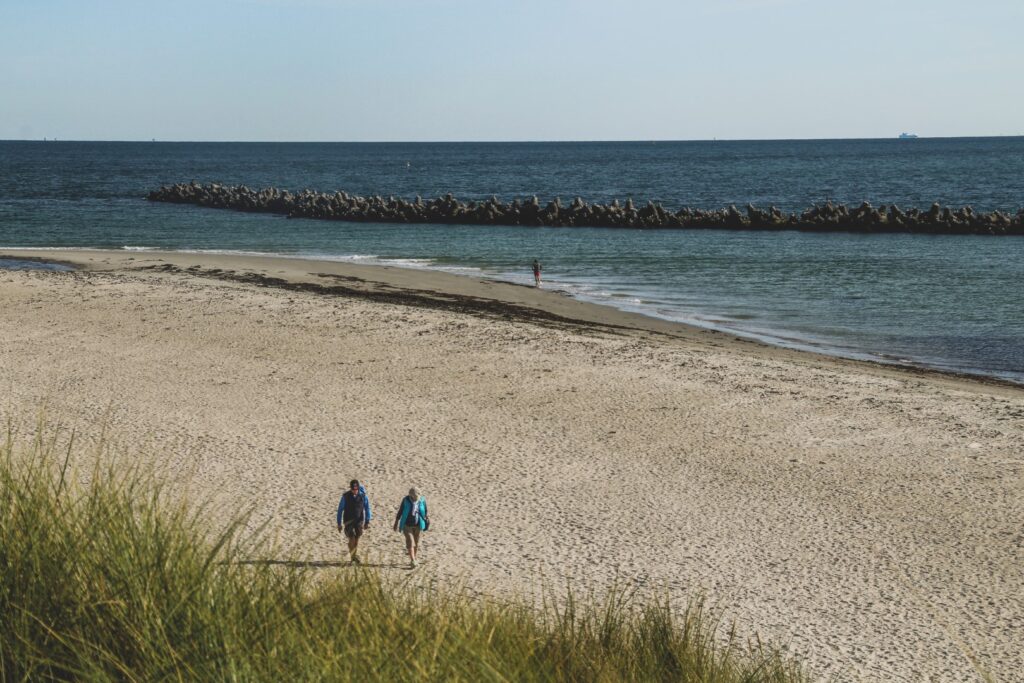
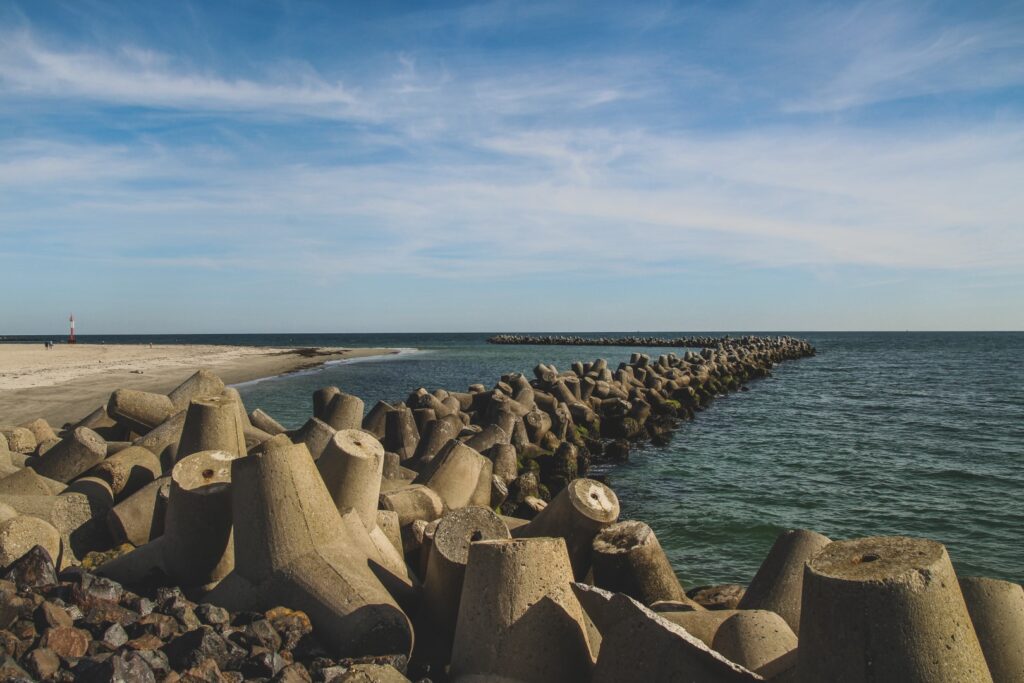

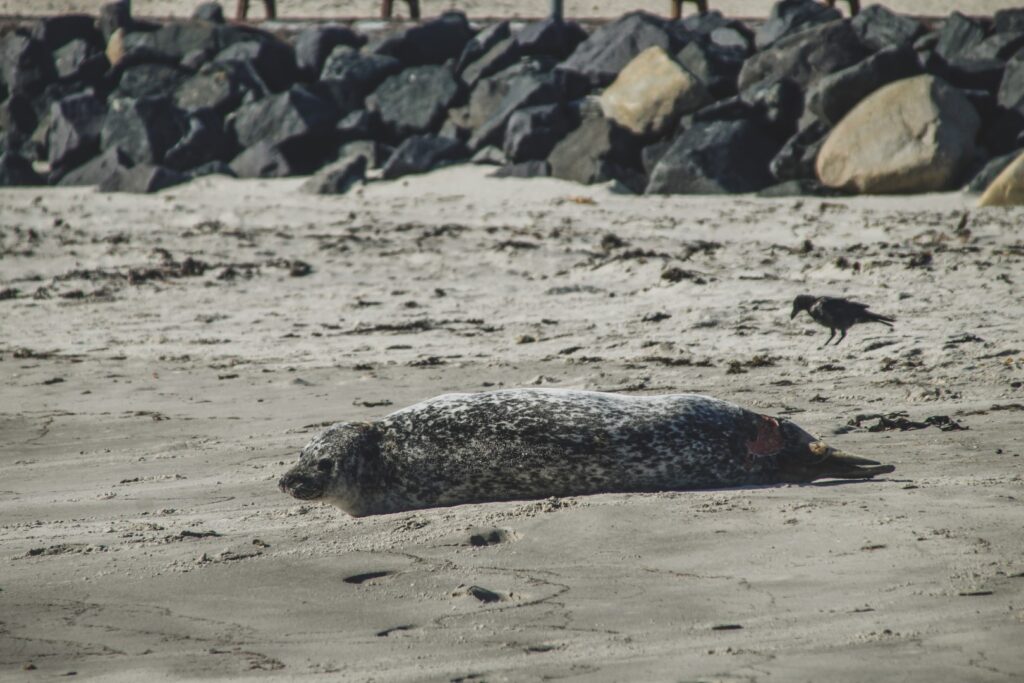


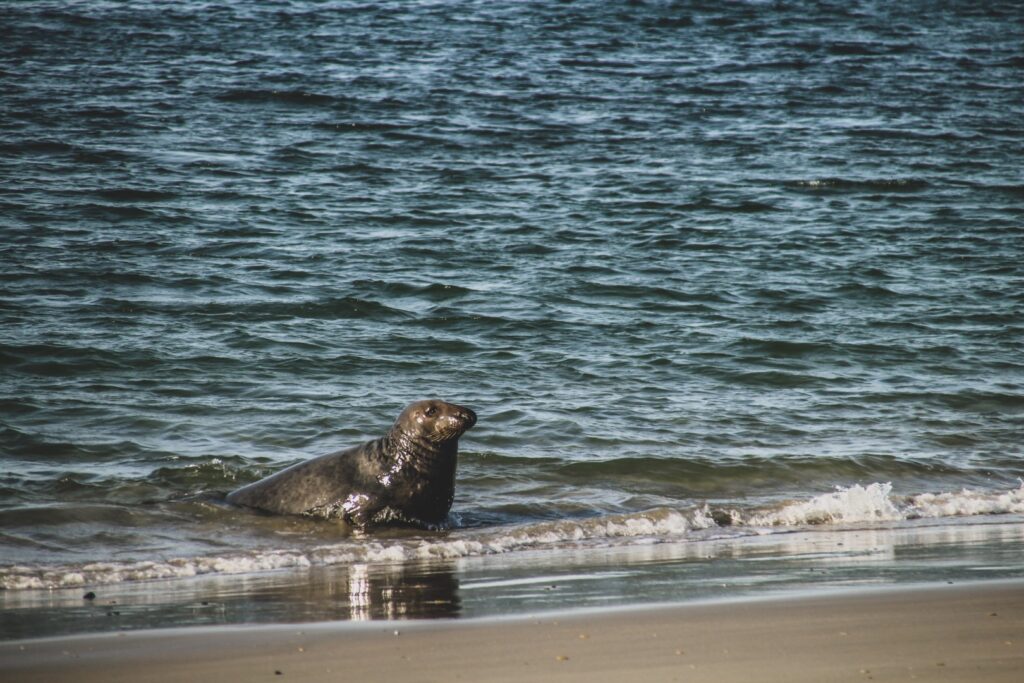
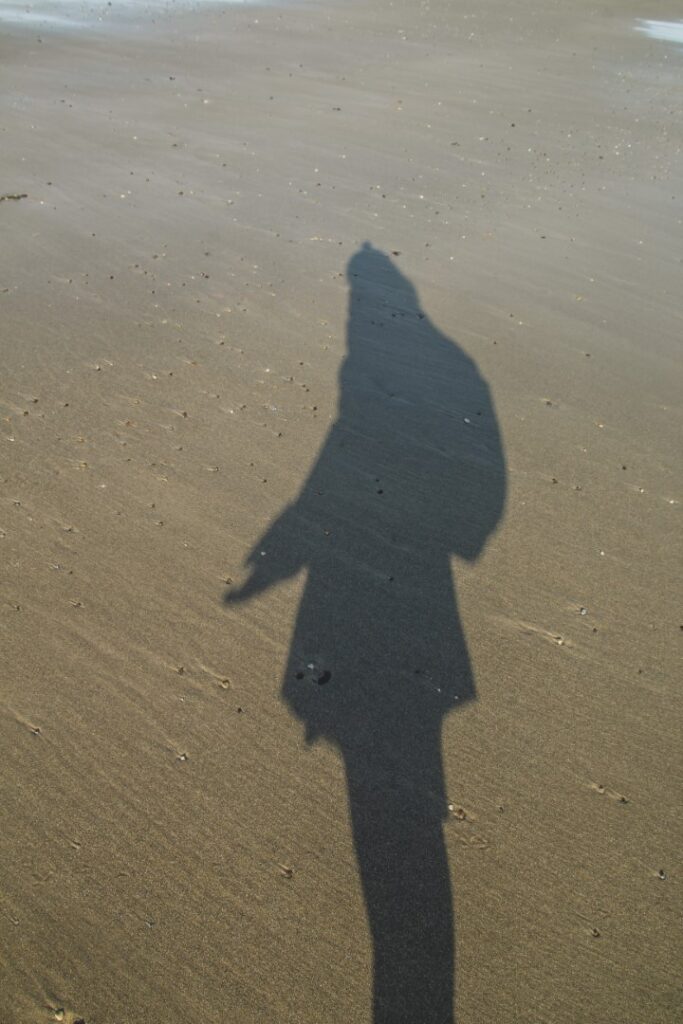
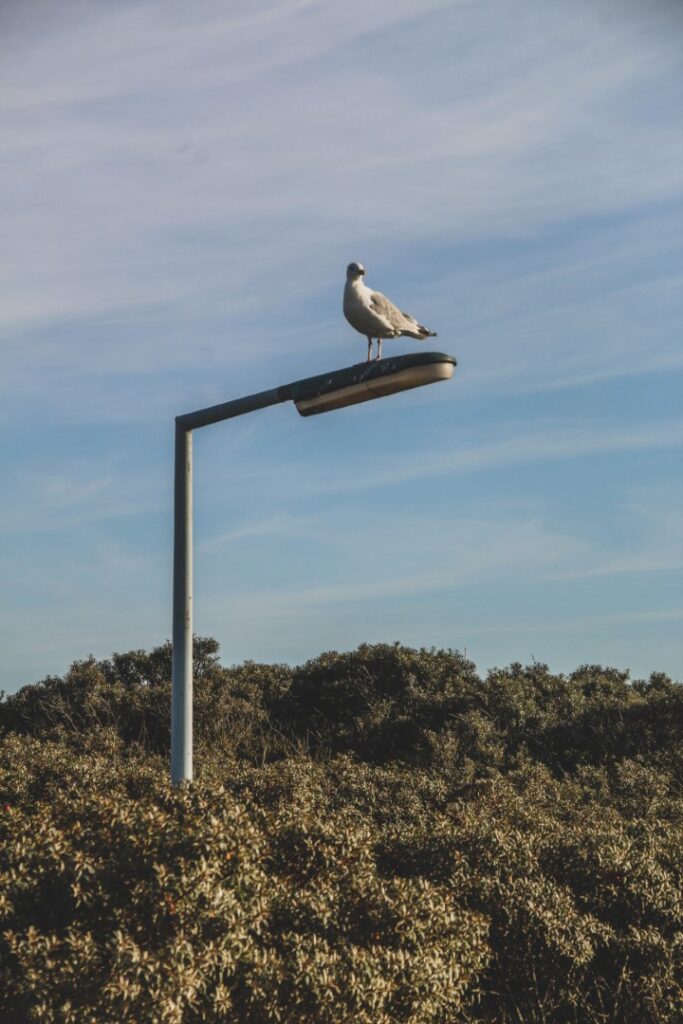


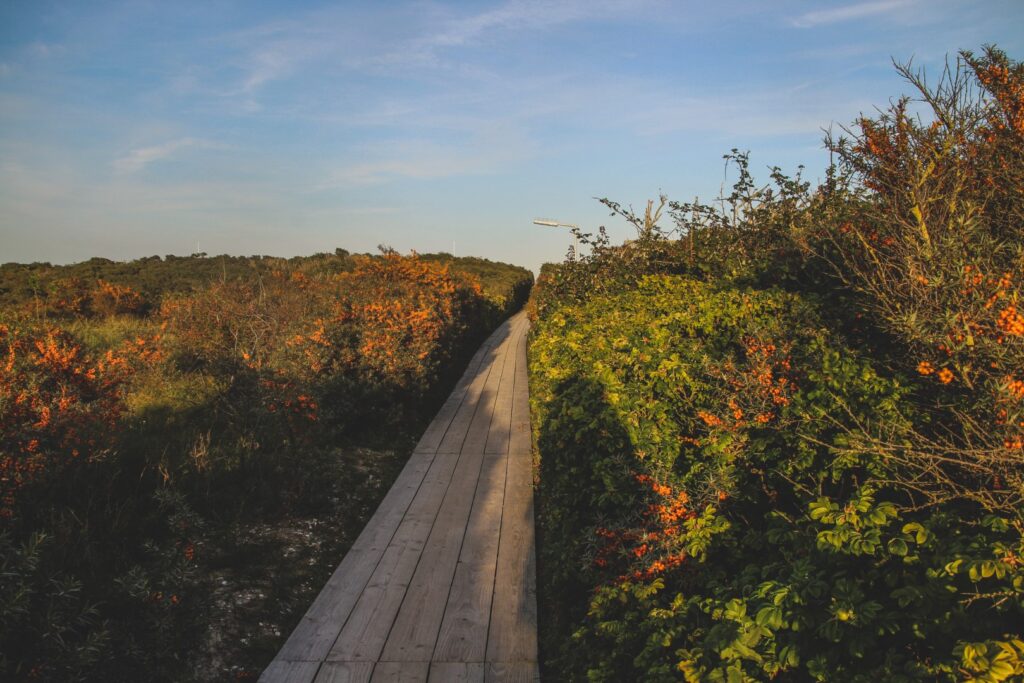
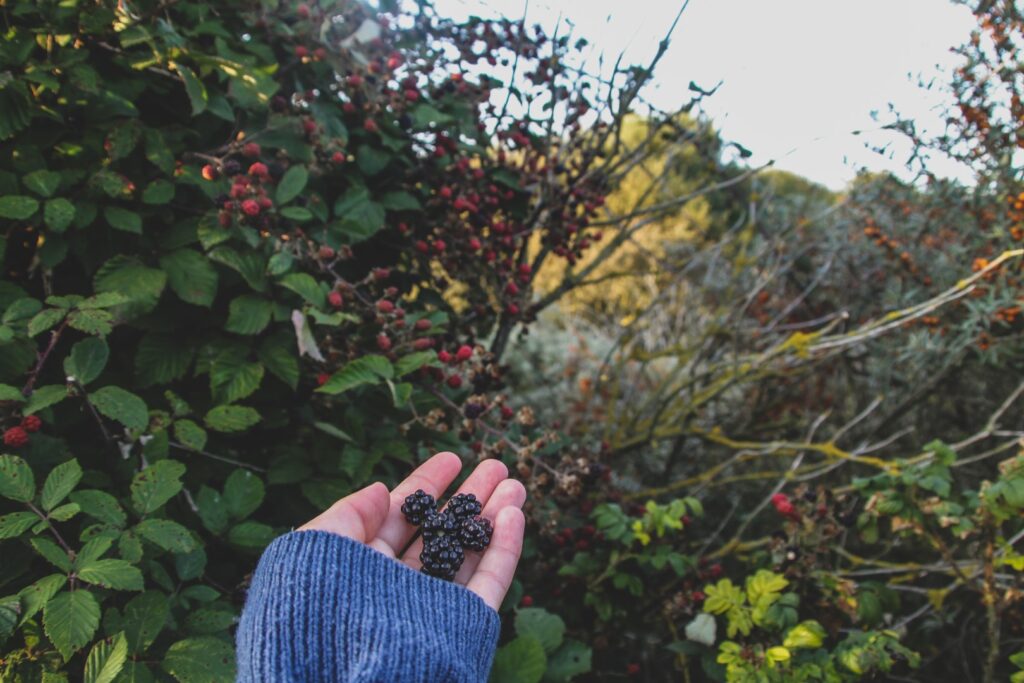
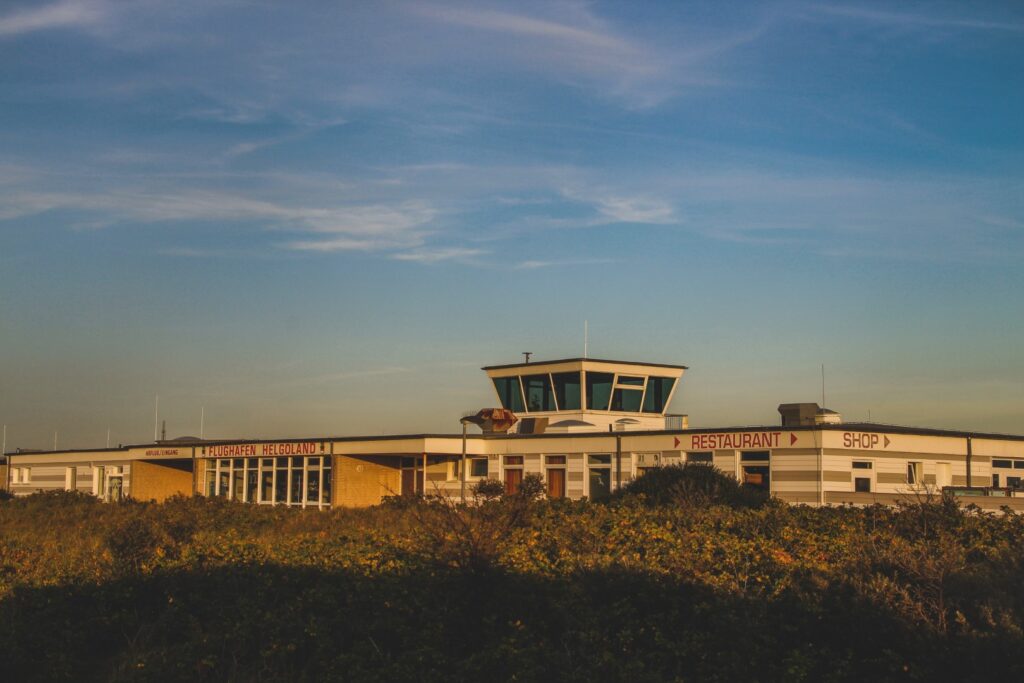
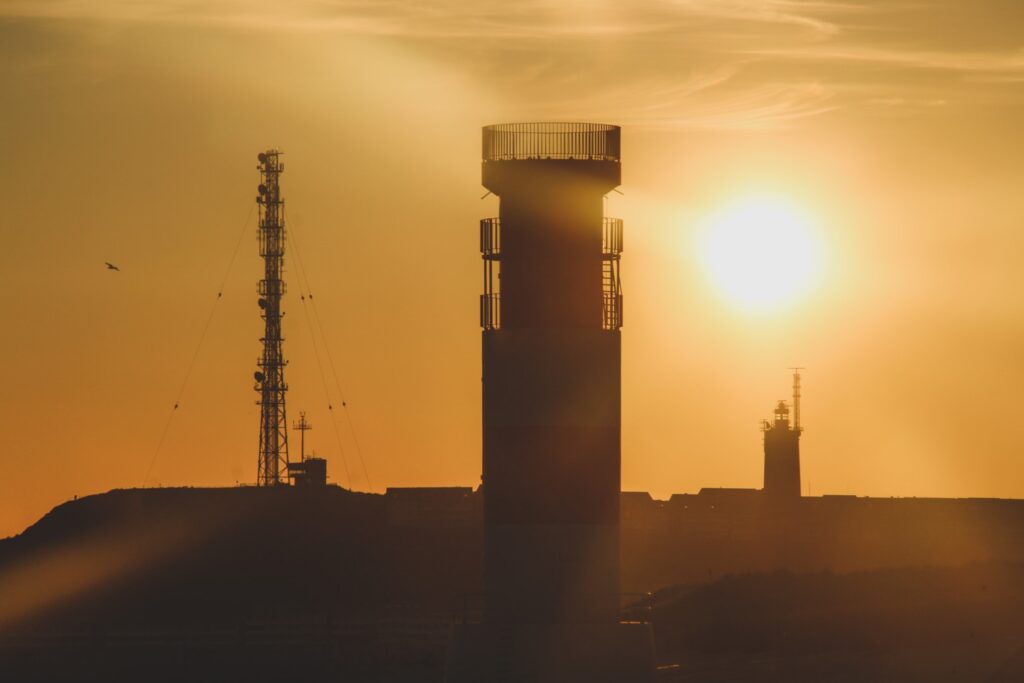
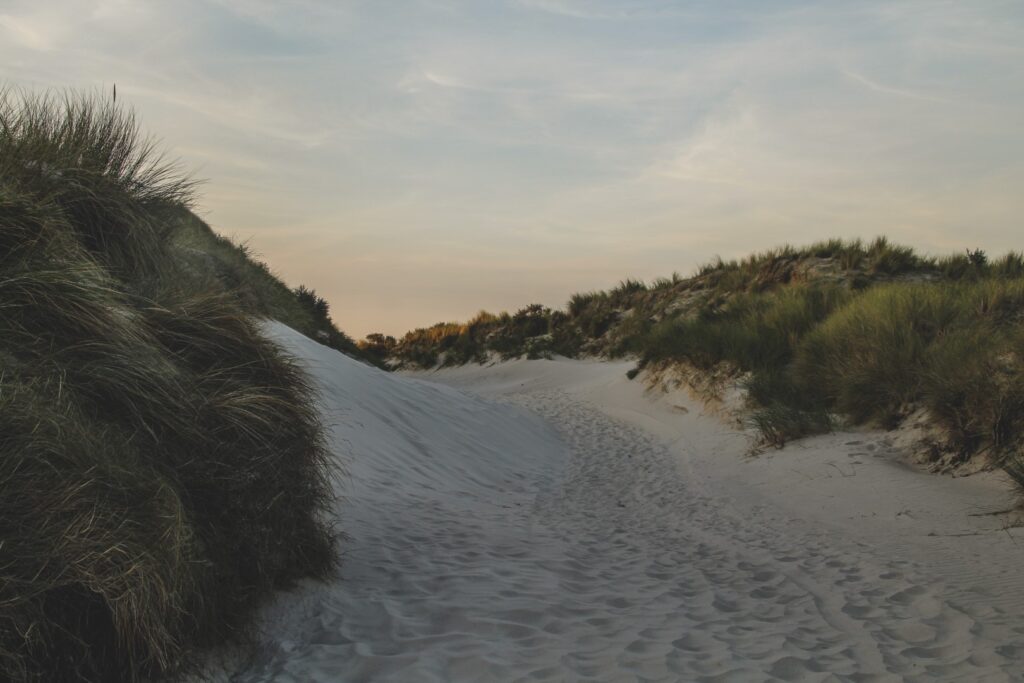
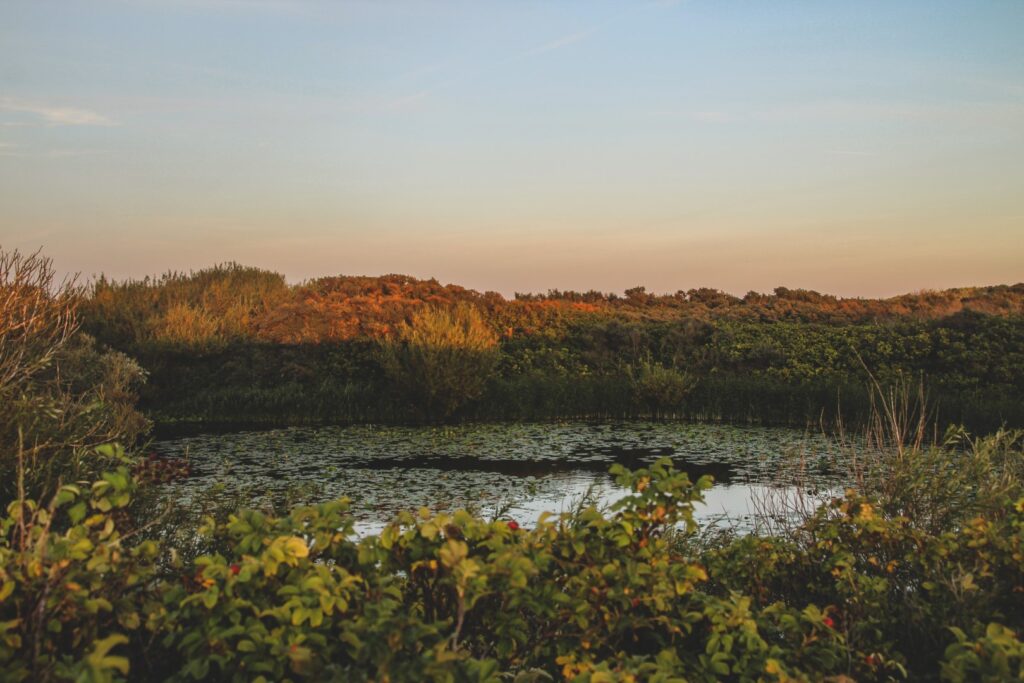
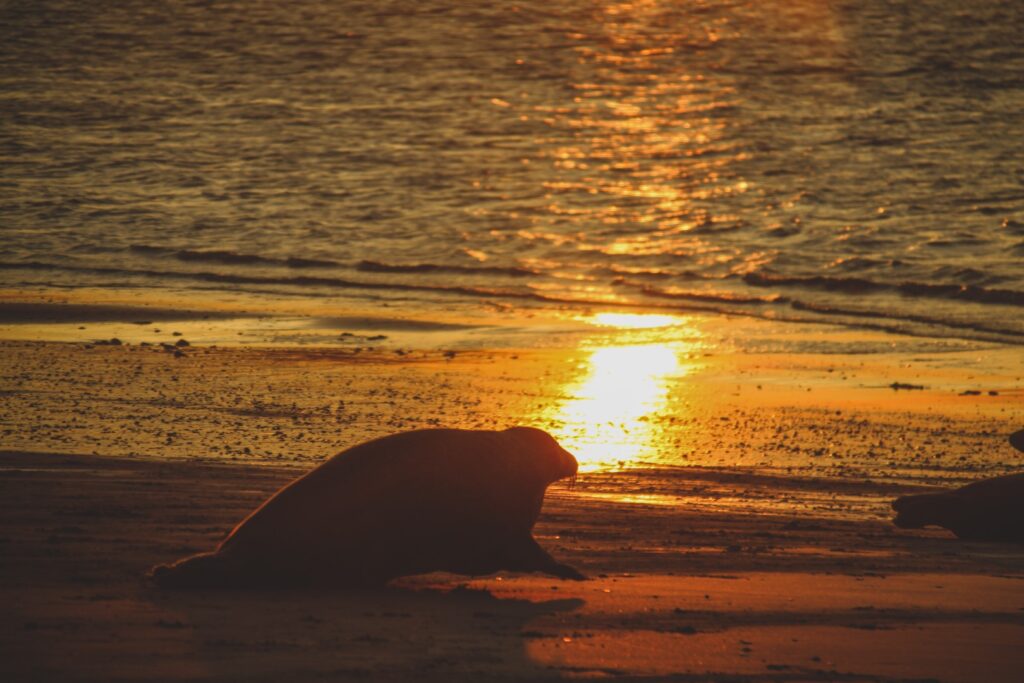
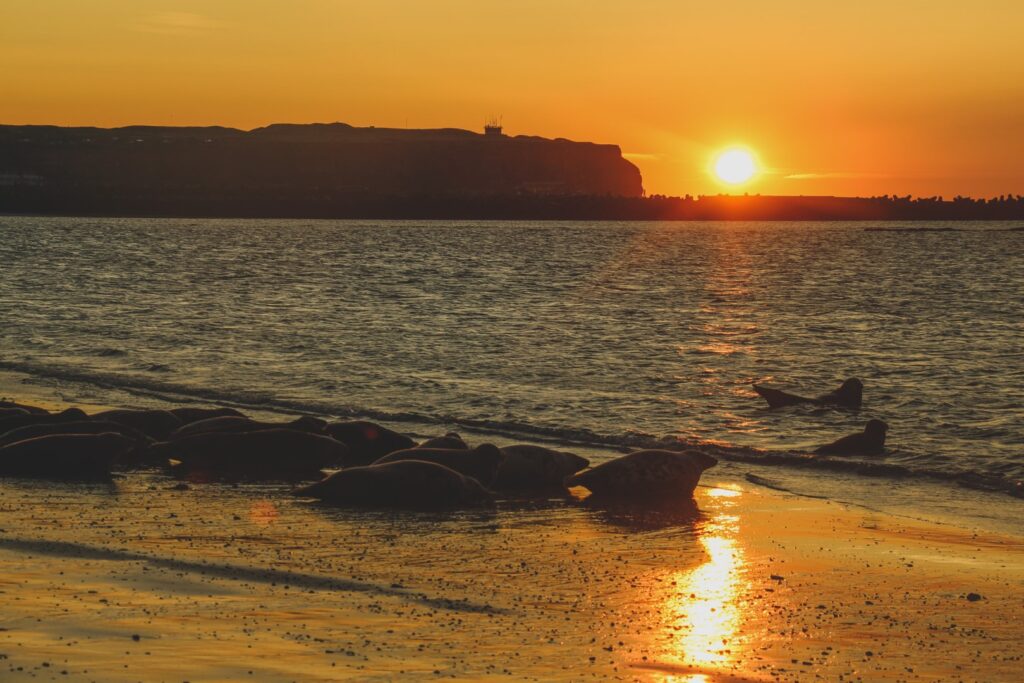


The following morning, I woke up before the sun to go for a sunrise walk by the red cliffs. I was going to walk to the bird cliffs by Lange Anna but when I realized that the sun was positioned at the opposite side, I decided to go down the long staircase on the other side of the cliffs at Nordostland instead. From there, I watched the sun appear over the horizon, painting the cliffs above me an even brighter red than before. Definitely worth waking up early for!
I went back to bed for an hour afterwards and then spent the rest of the morning strolling through the shopping streets of Unterland. Helgoland is a special tax-free zone, and is thus frequented by shoppers, but the shops didn’t interest me. I found them quite boring and expensive, to be honest. I did buy some fries though that I enjoyed by the harbour while listening to the sound of seagulls – one of my favourite sounds in this world!
Afterwards, I paid a visit to the tiny island museum. I enjoyed studying the artefacts in the exhibition that reveal details of the history of Helgoland, but unfortunately, I couldn’t understand much as the text was all in German. Still, it was worth the five-euro entrance fee to see the artefacts, especially the six Stone Age artefacts which prove that the area has been inhabited for thousands of years (and that makes my archaeology heart content!).
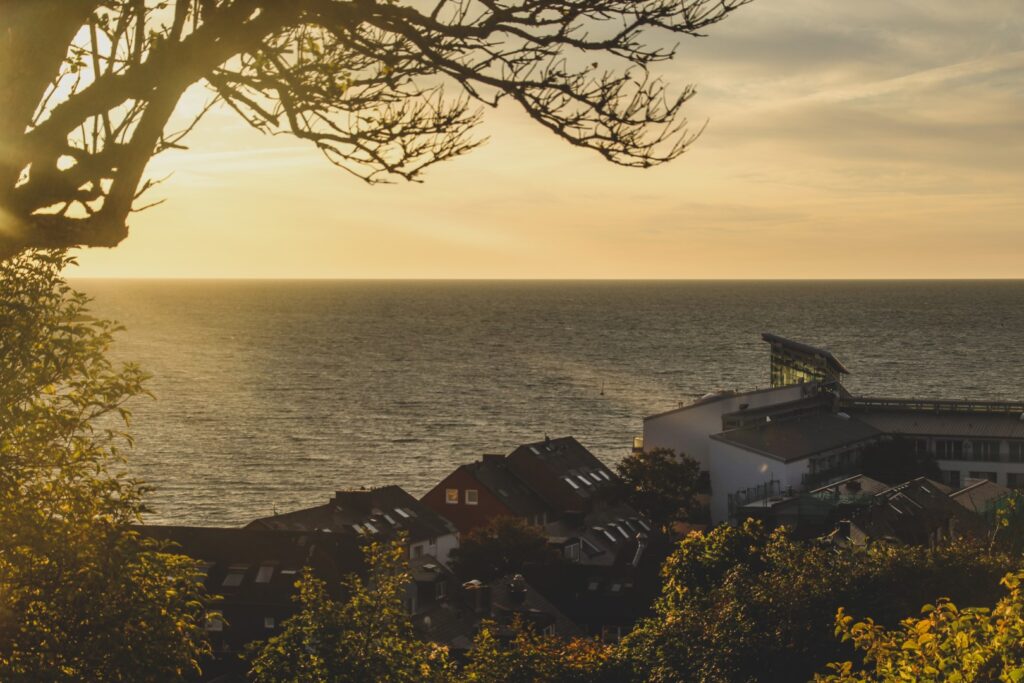


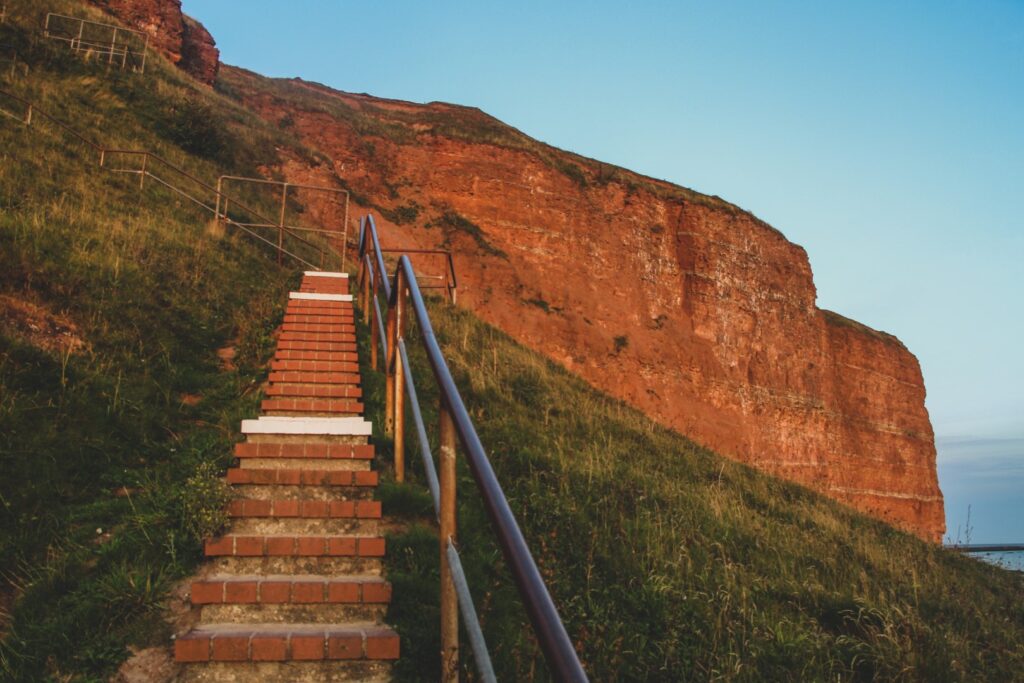
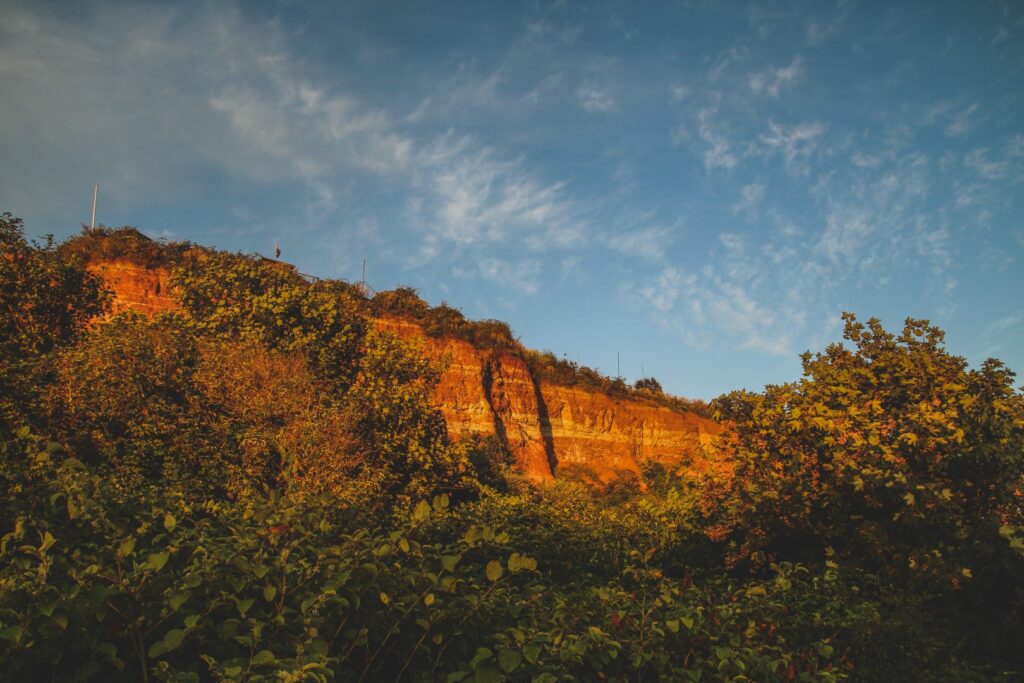
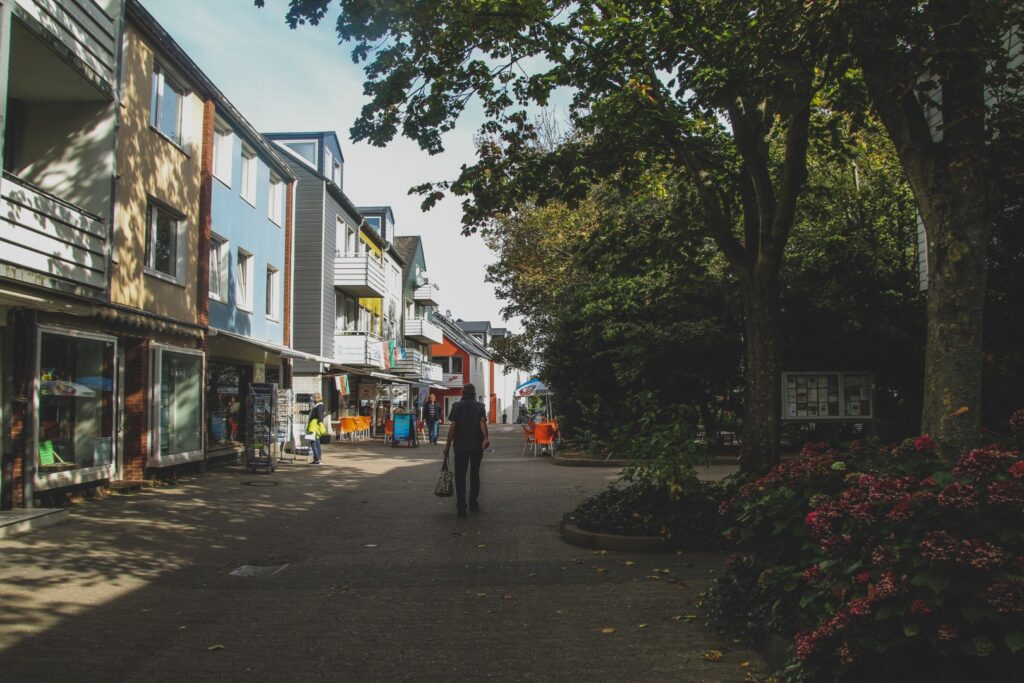
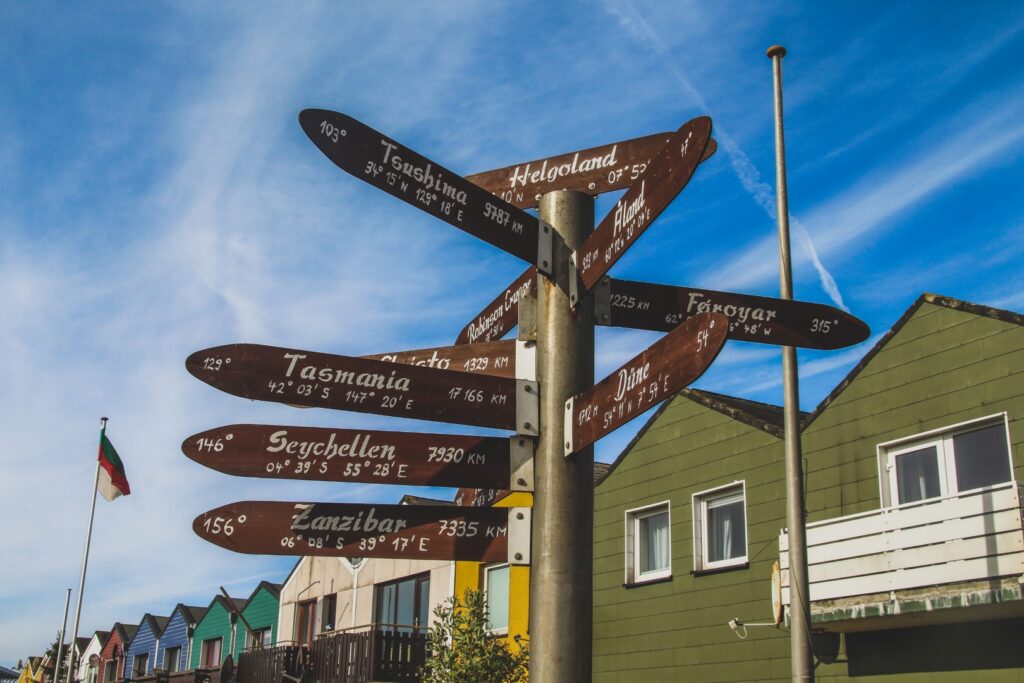


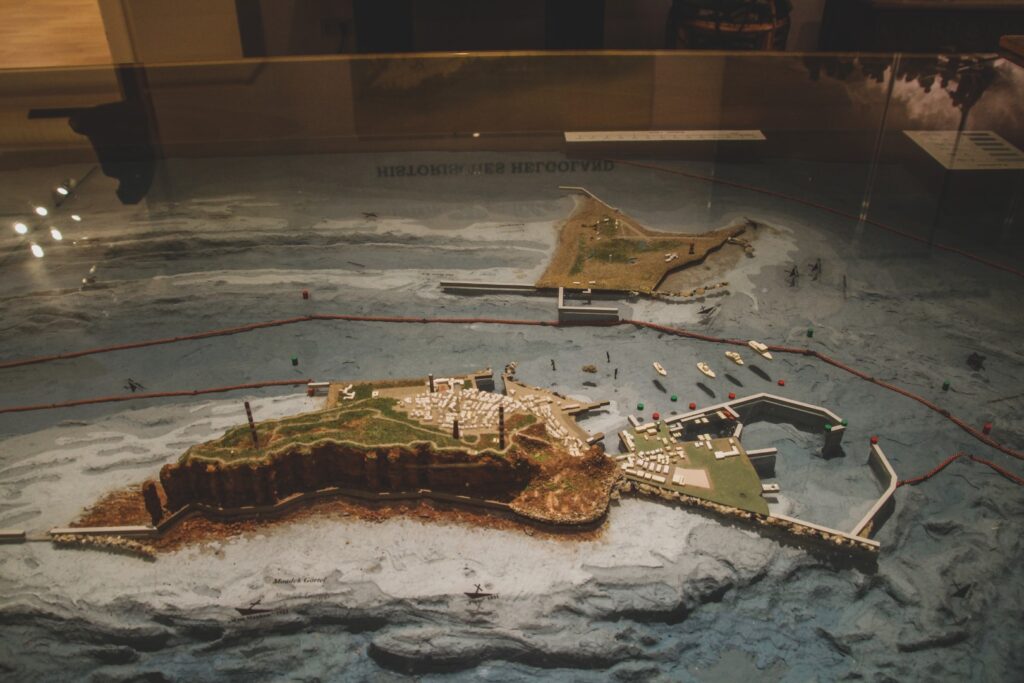

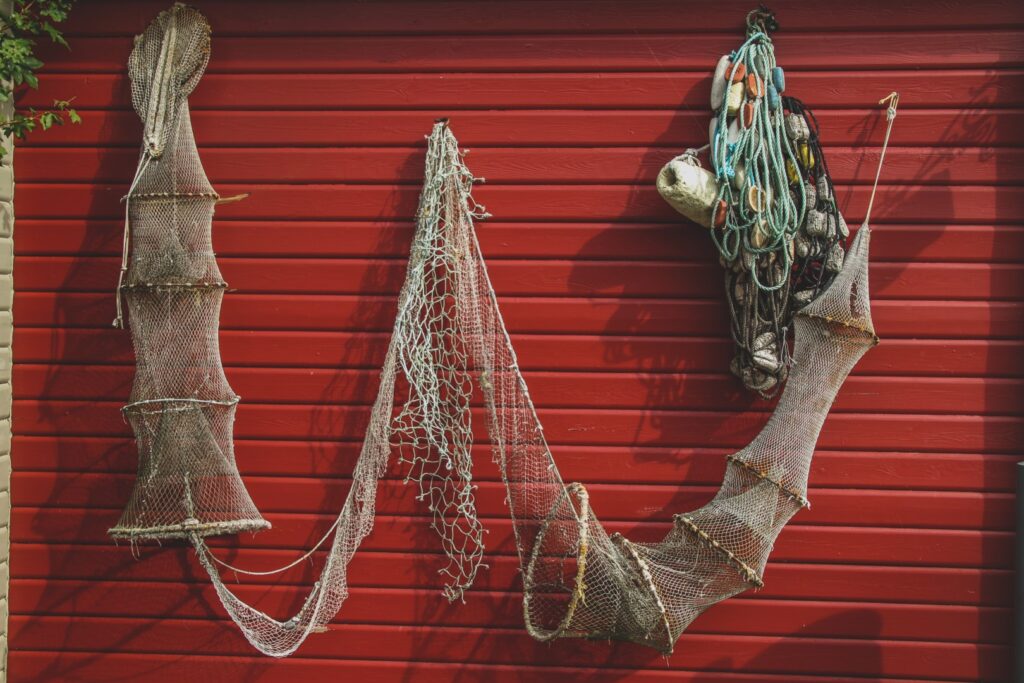
I had a slow afternoon. I wandered through the village for a bit, rested for a few hours in my room, and then headed out for an evening walk. There was still some of Mittelland that I hadn’t seen so I went there to explore it further. I found a gorgeous view over Unterland with houses that looked like colourful lego bricks. I walked through the narrow streets of Oberland, fed some cats along the way, and tried to get as close to the lighthouse as possible. Unfortunately, it’s closed to the public so I had to settle with a view of its exterior.
The sun was beginning to set so I walked north to the edge of the island. It was my last night on the island and I wanted the experience of the setting sun painting the cliffs a deep red once more. I sat myself on a bench to wait for the golden moment, listening to the birds and people in the background. For the first time, I could see Germany’s mainland in the distance. Suddenly, Helgoland didn’t feel so isolated anymore.
A cloud hid the final moments of sunset, but it was beautiful nonetheless. The sky turned pastel pink and people started walking back to the village. I was satisfied too and joined them to call it a night.
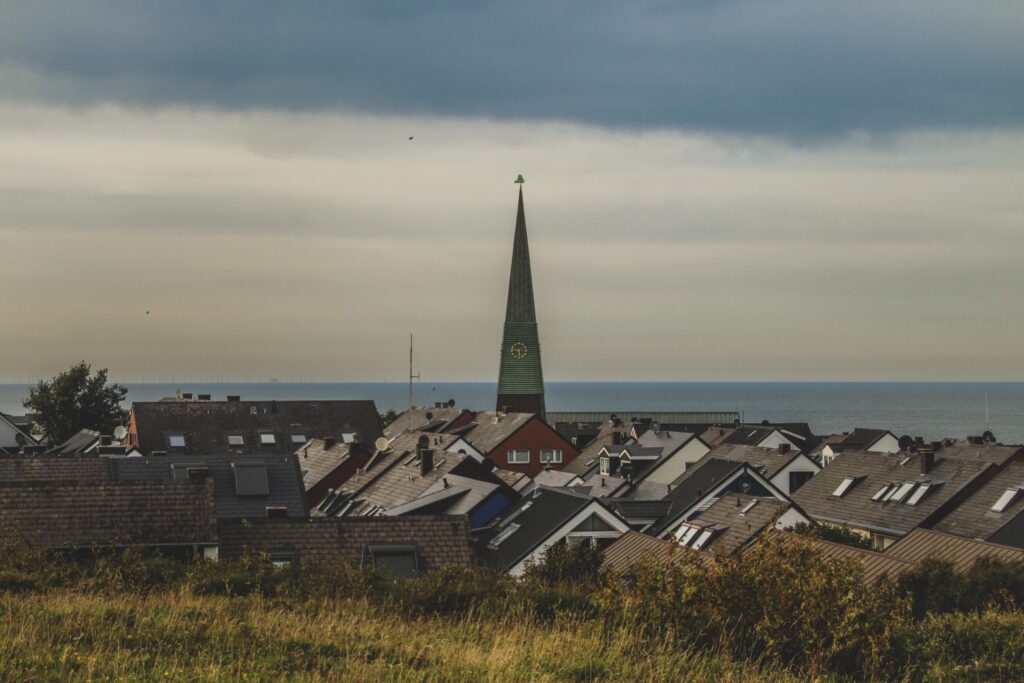
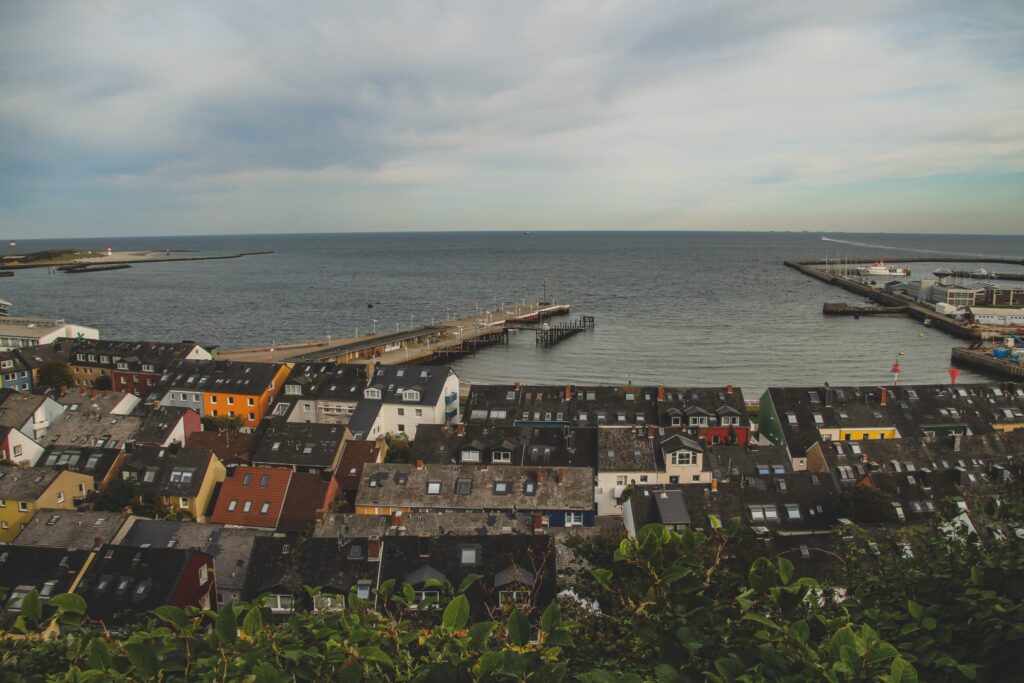
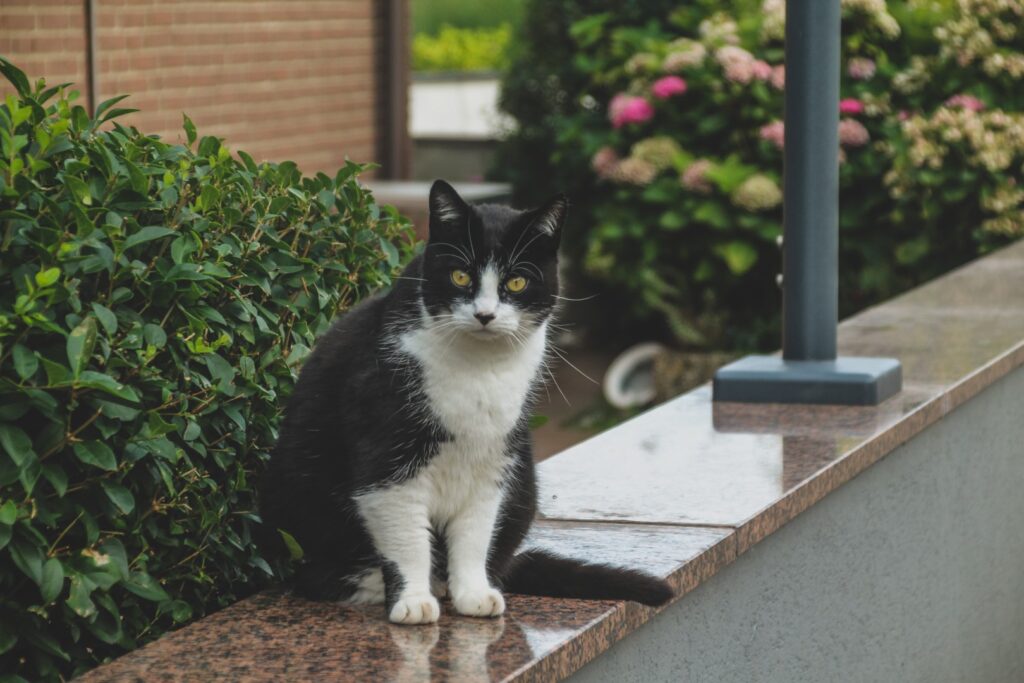

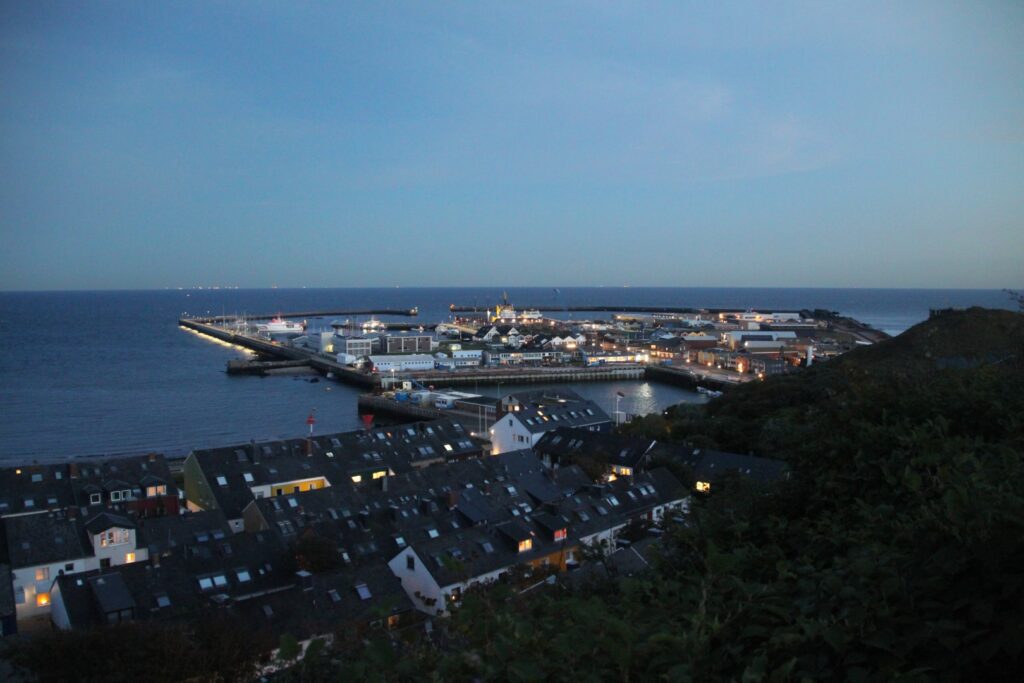
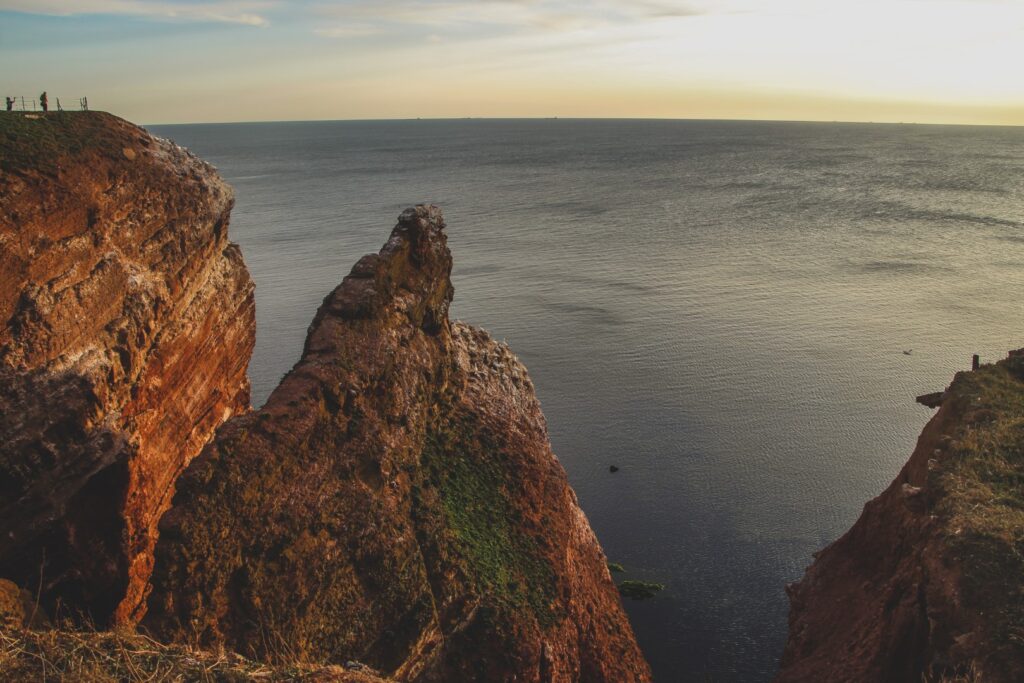
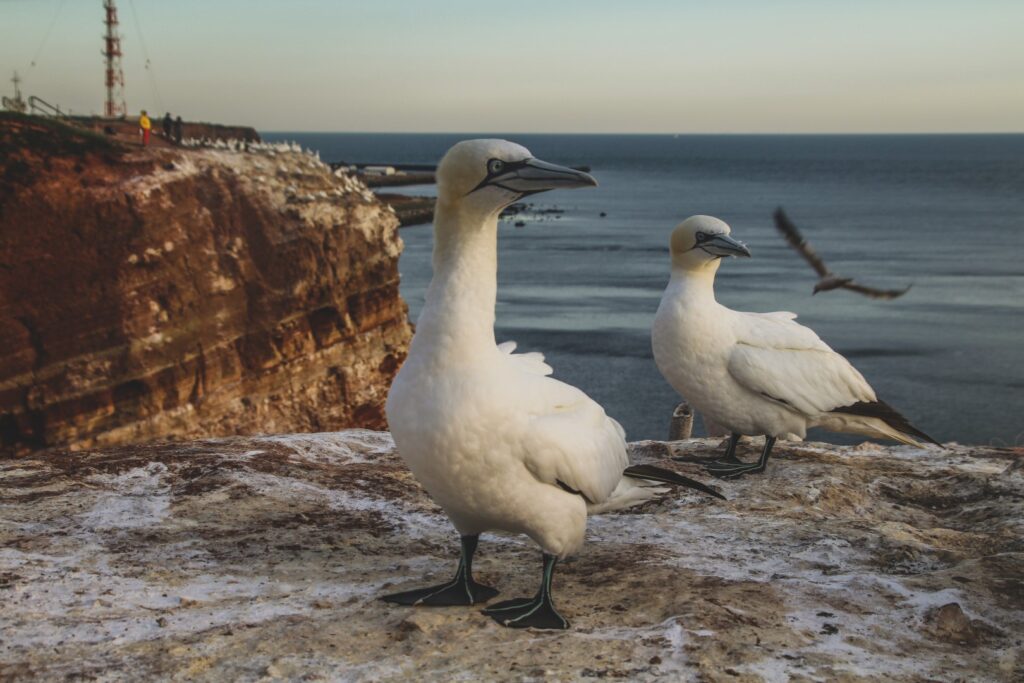

Next morning was check-out time. I had a shower, packed up my stuff and said goodbye to my cozy hotel room. I still had half a day left and I had an exciting boat trip planned for the day. But first, I wanted to find a quiet spot to enjoy my breakfast. I found it on a bench along Nordostbohlwerk, to the north of the harbour, where there was hardly anyone around.
I took my time, ate slowly and enjoyed the sunny morning. Then I strolled to the harbour and located the boat. I’d reserved a seat the day before for 20 euros, but there were only a few others on the tour. During our hour-long boat trip, we sailed along Helgoland’s rocky red coast, all the way around the island. It was really interesting to see the island from this angle as all the caves hidden in the cliffs came into sight. My only wish was that I could explore them!
The weather was hotter than it had been since I arrived, just perfect for a trip out at sea. When we got back to the harbour, I immediately set out on a walk along the coast – my last walk on Helgoland this time around. I still had three hours before my ferry departure, and I split that time between coastal walking and chilling on a bench, gazing out at the ocean and soaking up the heat from the sun.
I discovered an area I hadn’t yet been to, a grassy place beneath Mittelland that required a short steep downhill hike to reach. There, I had perfect views of the red cliffs from below, and I could even see Lange Anna and all the tourists standing above photographing her. I noticed a small trail leading up the cliffs, and I just had to follow it. I was very careful not to slip on the loose rocks, and listened carefully for any movement in the cliffs as I was now directly beneath them. I looked up and saw the most incredible rock formations above me. I’m so glad I randomly stumbled upon this place! Before I left, I picked up a tiny red rock and put it in my pocket as a reminder of this beautiful trip to Helgoland.
It was nearing the time of my departure, so I started walking back to town but with a detour along the middle of Oberland and through the cozy Kleingartenverein. I cuddled a cat, then walked down to the harbour and joined the flock of people heading towards the ferry. At 4 PM, I left Helgoland behind and began my journey home, first to Büsum to pick up the car and then a 3,5-hour journey back home to Denmark.

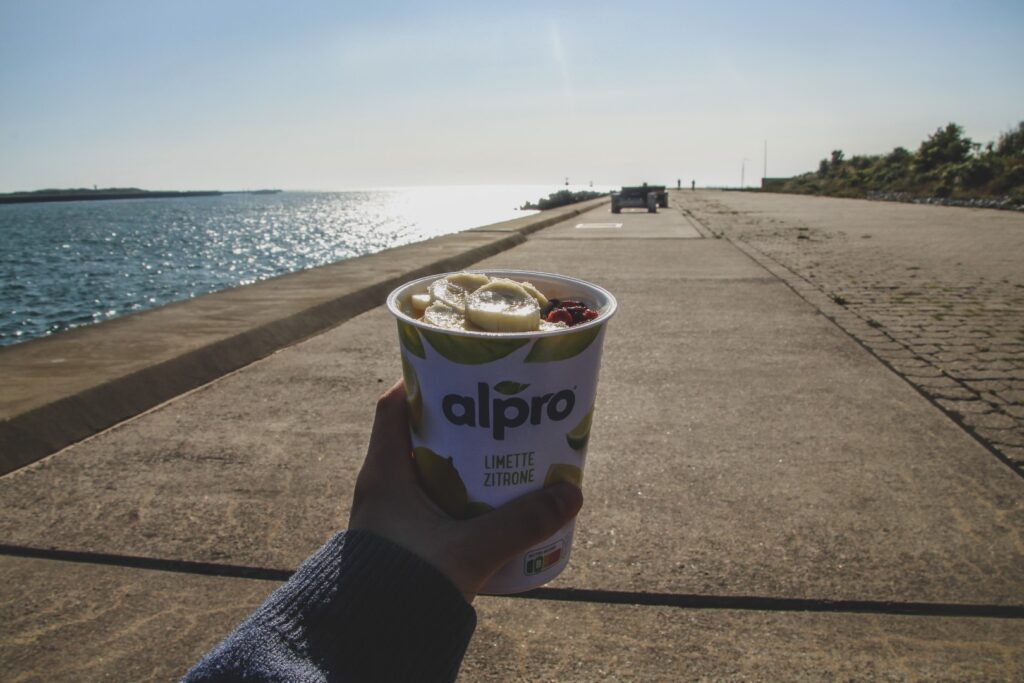
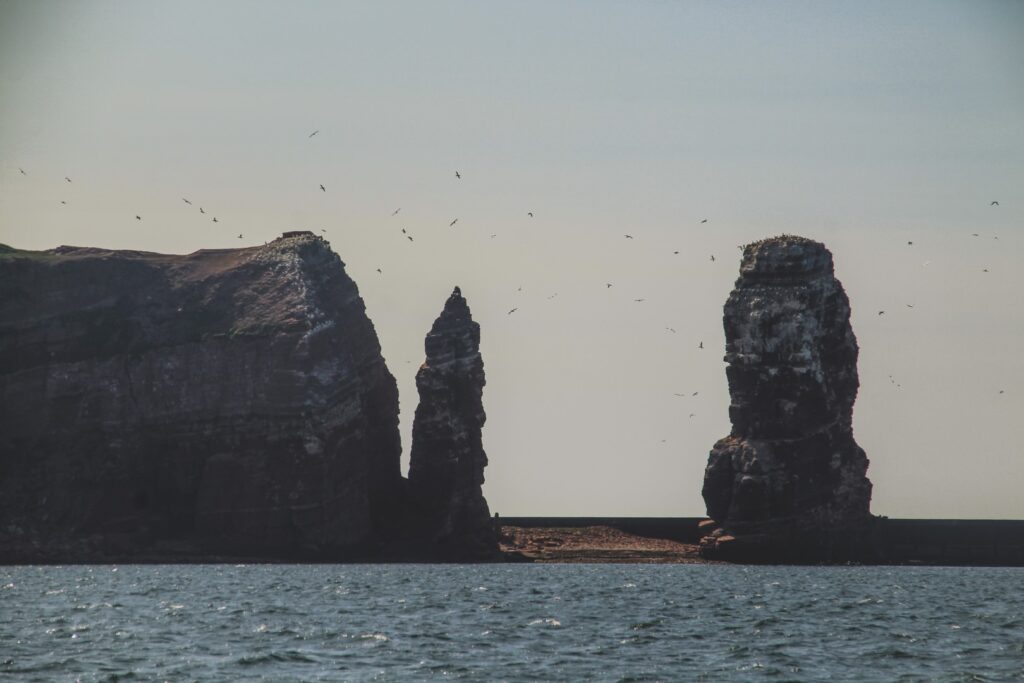
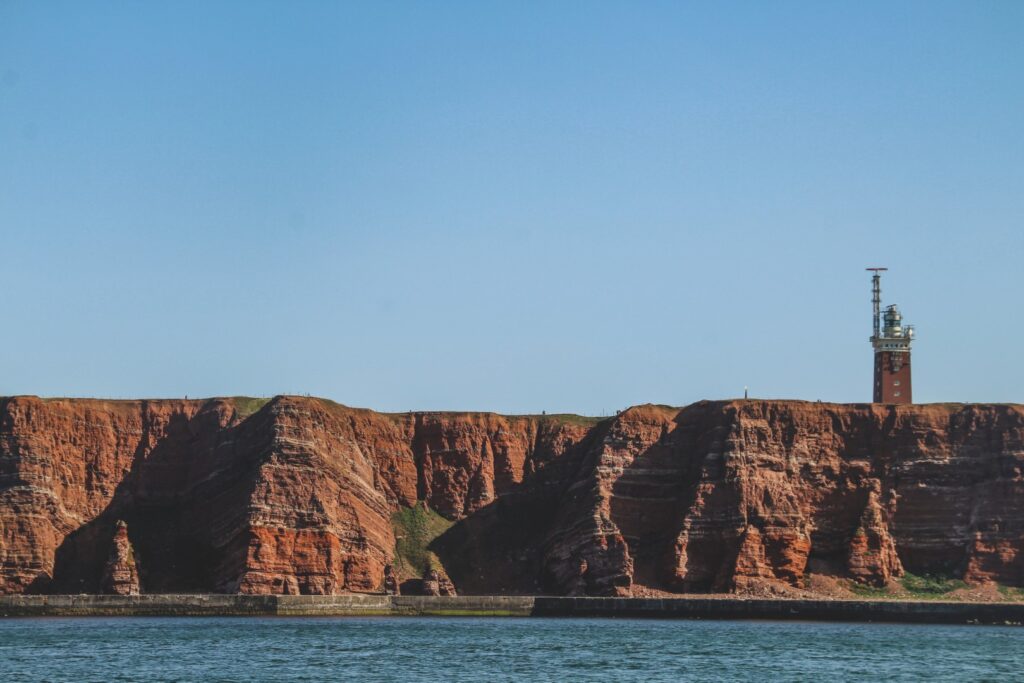


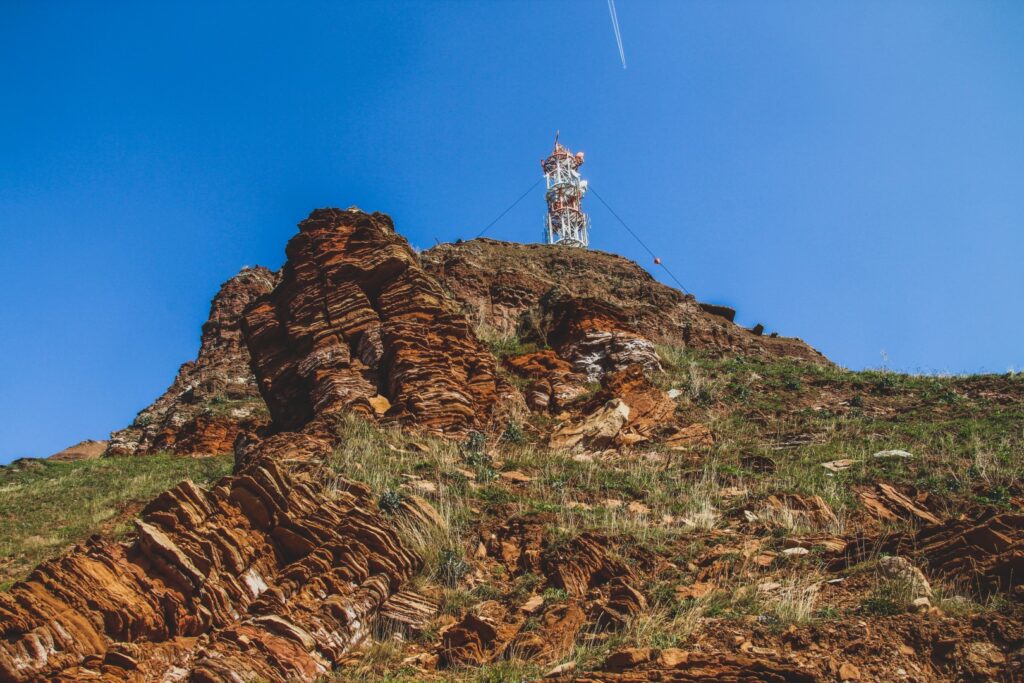
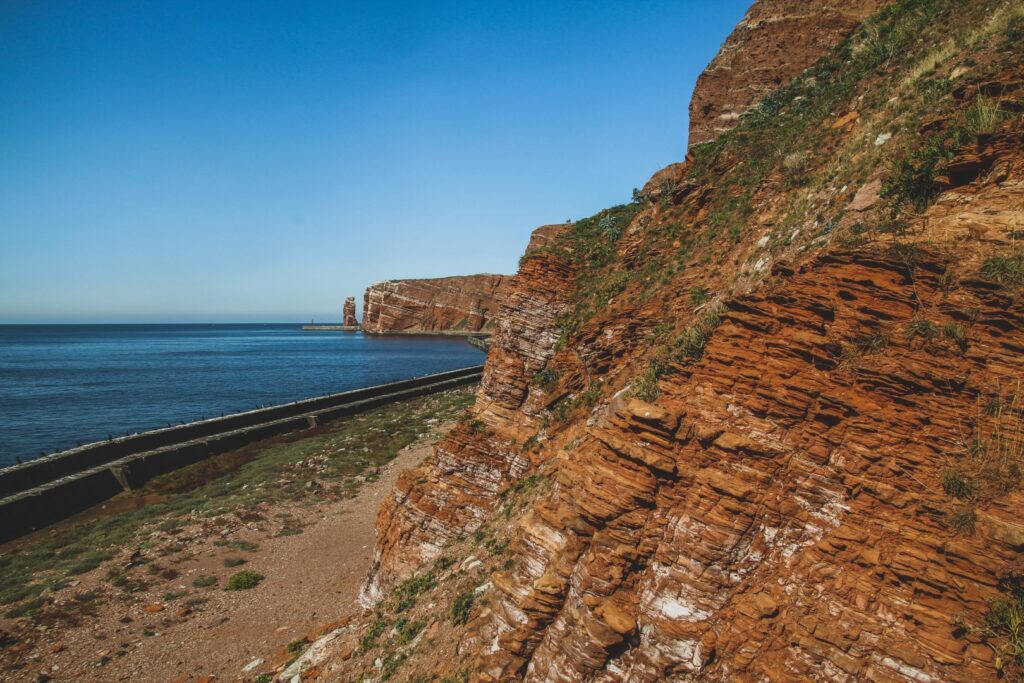
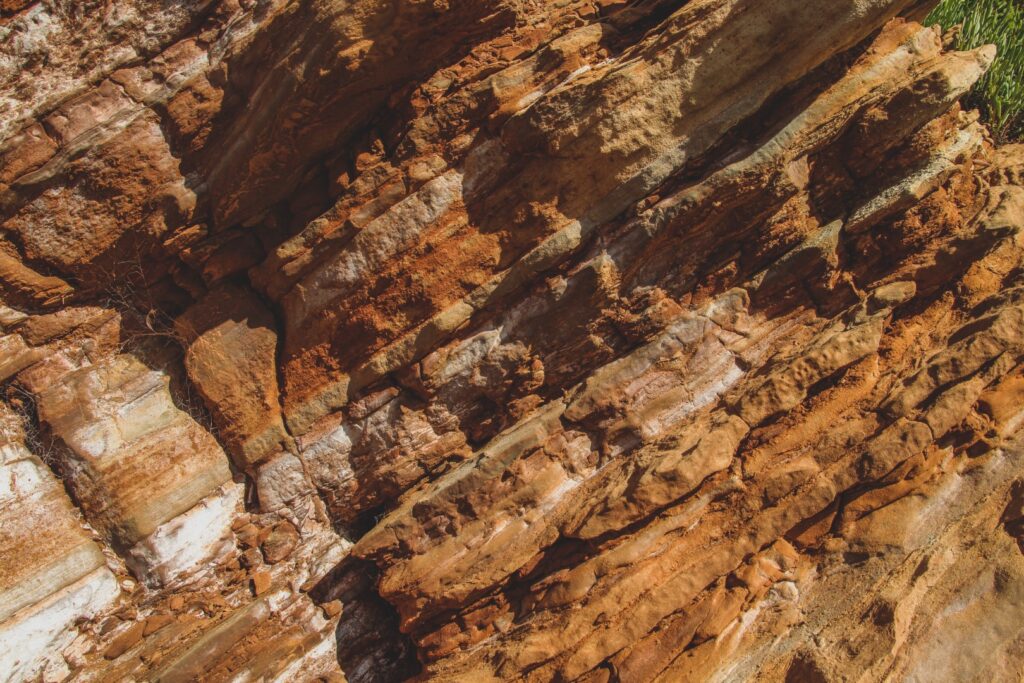
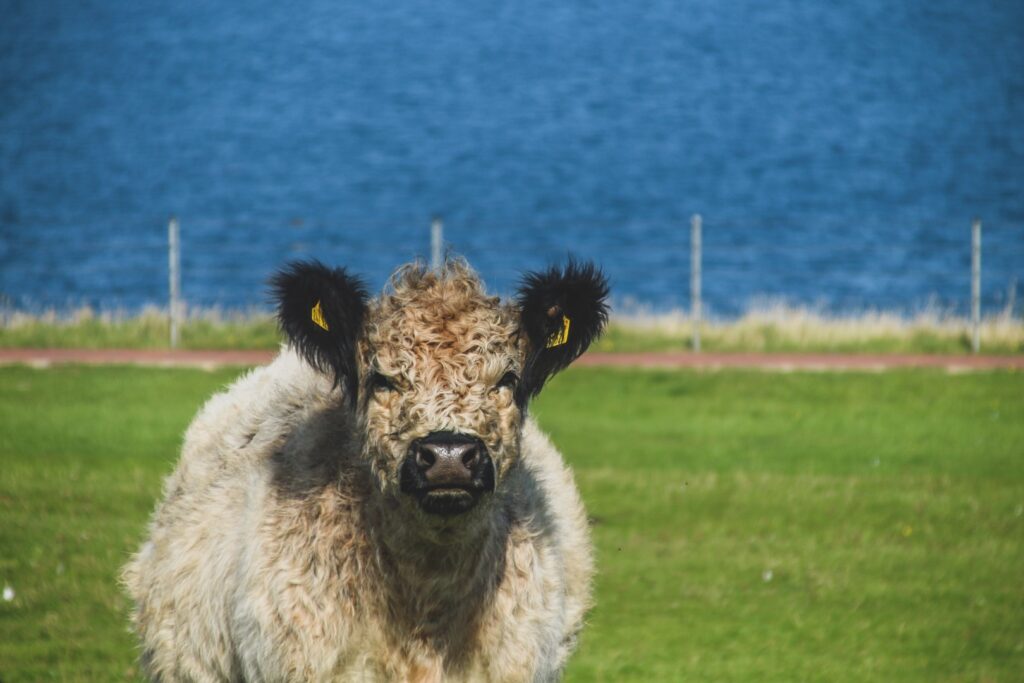

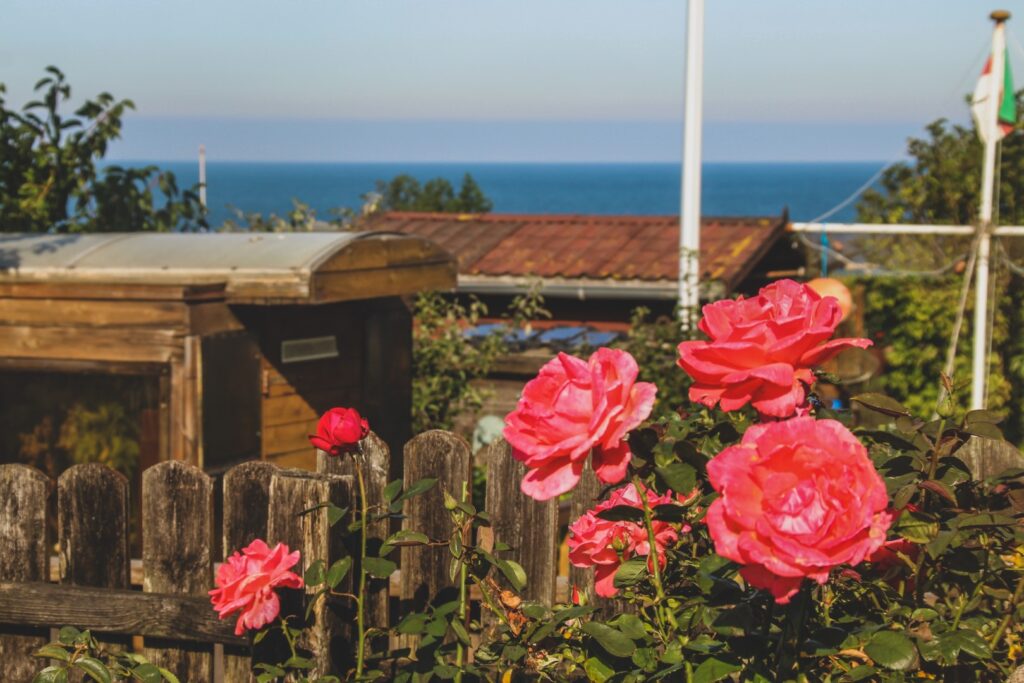
Helgoland surprised me a lot with its natural beauty and cozy island atmosphere. I didn’t know it at the time, but it became a place I’d miss very much. I’m missing it today as I write this. I don’t know what it is, but something draws me to Helgoland. It’s the same feeling the Faroe Islands and Greenland give me. I just love the place so much, and I can’t fully describe why.
But for this reason, I know I will return one day. Next time, I would love to see the island covered in snow. I can only imagine how beautiful ice crystals would look against the red cliffs.
Leave a Comment
Pingback: My best travel moments of 2020 – Northtrotter on 17/11/2022
Pingback: My 20 favourite new destinations of 2020 – Northtrotter on 17/11/2022
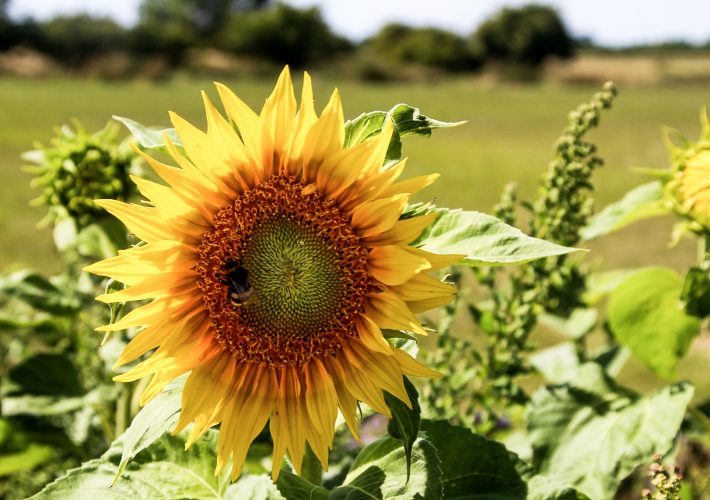
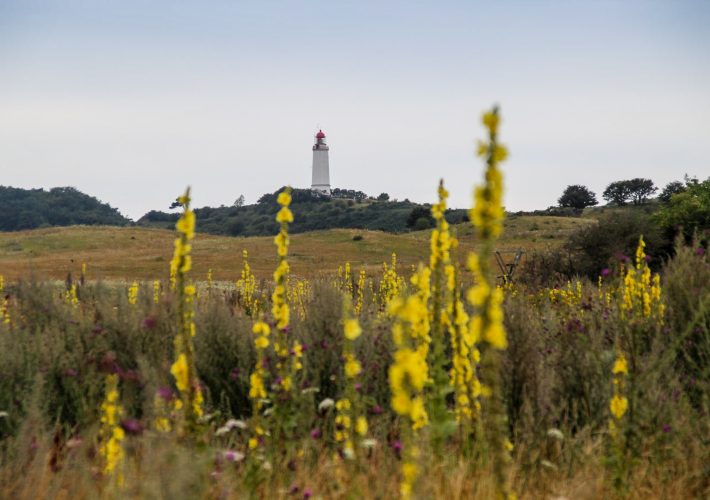


2 COMMENTS